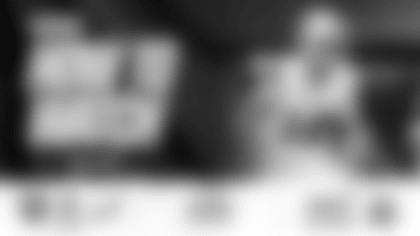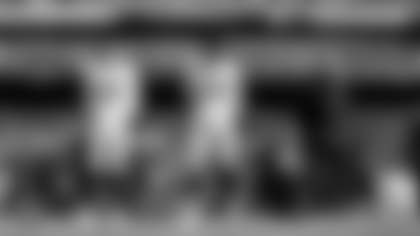Before Tom McMahon stepped on the field Tuesday to coach his special teams unit, he got prepared by coaching up the local media.
The special teams coordinator spoke during OTA media availability and as to be expected, was asked about the NFL's new kickoff rule. While at the podium, he enthusiastically explained the significance of this new rule, but he didn't just simply answer the reporters' questions. He went out his way to show them.
The new rule, which was approved during the annual Owners Meeting in March, is similar to how the XFL operated kickoffs. It introduces a setup zone (a 5-yard area between the receiving team's 35- and 30-yard lines) and landing zone (area between the receiving team's goal line and its 20-yard line). All players on the kickoff team will line up at the receiving team's 40-yard line while the receiving team will line up at their own 5.
Players can't move until the ball hits the landing zone or end zone and the kicker cannot cross the 50-yard line until the ball touches the ground or is caught (where it must be returned as fair catches are no longer permitted). The goal with the new standards is to ensure player safety and avoid collisions at high speeds.
"Last year at the 40-yard line, guys were going 19-21 miles per hour. [Now] we're going zero," McMahon said. "So, we're starting at nothing and you're right there at about five yards, you're waiting there to block me so the collisions are at seven miles per hour versus 19-20. It's a big difference."
As a coach, McMahon found it easier to replicate the action than explain, stepping aside from the podium to mimic the motions and gestures of how players will now be lined up on special teams. He also walked through what techniques would be advantageous for his kick and punt coverage teams to get down the field, and how his returners should react the fielding kicks.
"For example, I kickoff and it goes right here to you," McMahon said, gesturing to the reporter in front of him. "That's the point of attack. We have to win on kickoff coverage here. The backside is still at the 40-yard line so we're long ways away. Your point of attack, wherever the ball is being kicked, these players are very important on kickoff coverage but they're also important on kickoff return.
"The biggest thing [Antonio Pierce] has given us is we have walk-through time at the end of practice that's built into the practice so that the players can visualize it. It's new to them. It's new to everybody. They've never done it. It's very awkward to watch a ball hit [the ground] and then be ready to go."
McMahon noted that the new rules could be favorable in returners being more dynamic on the field, an exciting prospect given that two of the Silver and Black's draft picks were exceptional collegiate kick returners: Dylan Laube and M.J. Devonshire. He also believes that hang time for kickers won't be necessary anymore, but they won't have to reinvent the wheel with their technique.
He admitted that it will be an ongoing process for players and coaches alike to fully understand the adjustments, and teams might use inspiration from one another to game plan in accordance with the new rule. But as a whole, McMahon's verdict on the new rule?
"I love it. I love it."
Head inside Intermountain Health Performance Center to view photos from day two of OTAs.

Las Vegas Raiders wide receiver DJ Turner (19) at an Organized Team Activity (OTA) at Intermountain Health Performance Center.

Las Vegas Raiders quarterback Aidan O'Connell (12) at an Organized Team Activity (OTA) at Intermountain Health Performance Center.

Las Vegas Raiders tackle Andrew Coker (73) at an Organized Team Activity (OTA) at Intermountain Health Performance Center.

Las Vegas Raiders guard Clark Barrington (64) at an Organized Team Activity (OTA) at Intermountain Health Performance Center.

Las Vegas Raiders tackle DJ Glaze (71) at an Organized Team Activity (OTA) at Intermountain Health Performance Center.

Las Vegas Raiders tackle Thayer Munford Jr. (77) at an Organized Team Activity (OTA) at Intermountain Health Performance Center.
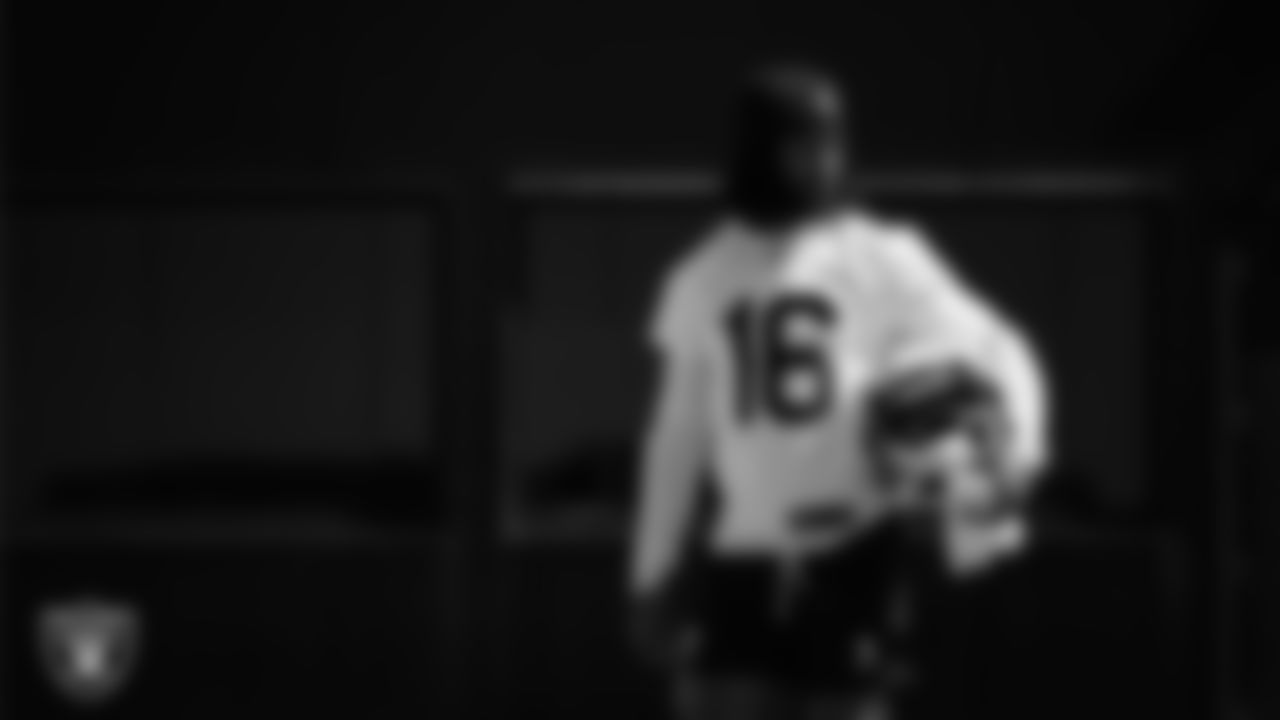
Las Vegas Raiders wide receiver Jakobi Meyers (16) at an Organized Team Activity (OTA) at Intermountain Health Performance Center.

Las Vegas Raiders cornerback Ja'Quan Sheppard (46) at an Organized Team Activity (OTA) at Intermountain Health Performance Center.

Las Vegas Raiders safety Chris Smith II (29) at an Organized Team Activity (OTA) at Intermountain Health Performance Center.

Las Vegas Raiders cornerback Woo Governor (44) at an Organized Team Activity (OTA) at Intermountain Health Performance Center.

Las Vegas Raiders safety Isaiah Pola-Mao (20) at an Organized Team Activity (OTA) at Intermountain Health Performance Center.

Las Vegas Raiders safety Jaydon Grant (40) at an Organized Team Activity (OTA) at Intermountain Health Performance Center.

Las Vegas Raiders defensive line coach Rob Leonard and defensive tackle Marquan McCall (52) at an Organized Team Activity (OTA) at Intermountain Health Performance Center.

Las Vegas Raiders defensive end Maxx Crosby (98) at an Organized Team Activity (OTA) at Intermountain Health Performance Center.

Las Vegas Raiders defensive tackle John Jenkins (95) at an Organized Team Activity (OTA) at Intermountain Health Performance Center.

Las Vegas Raiders defensive end Tyree Wilson (9) at an Organized Team Activity (OTA) at Intermountain Health Performance Center.
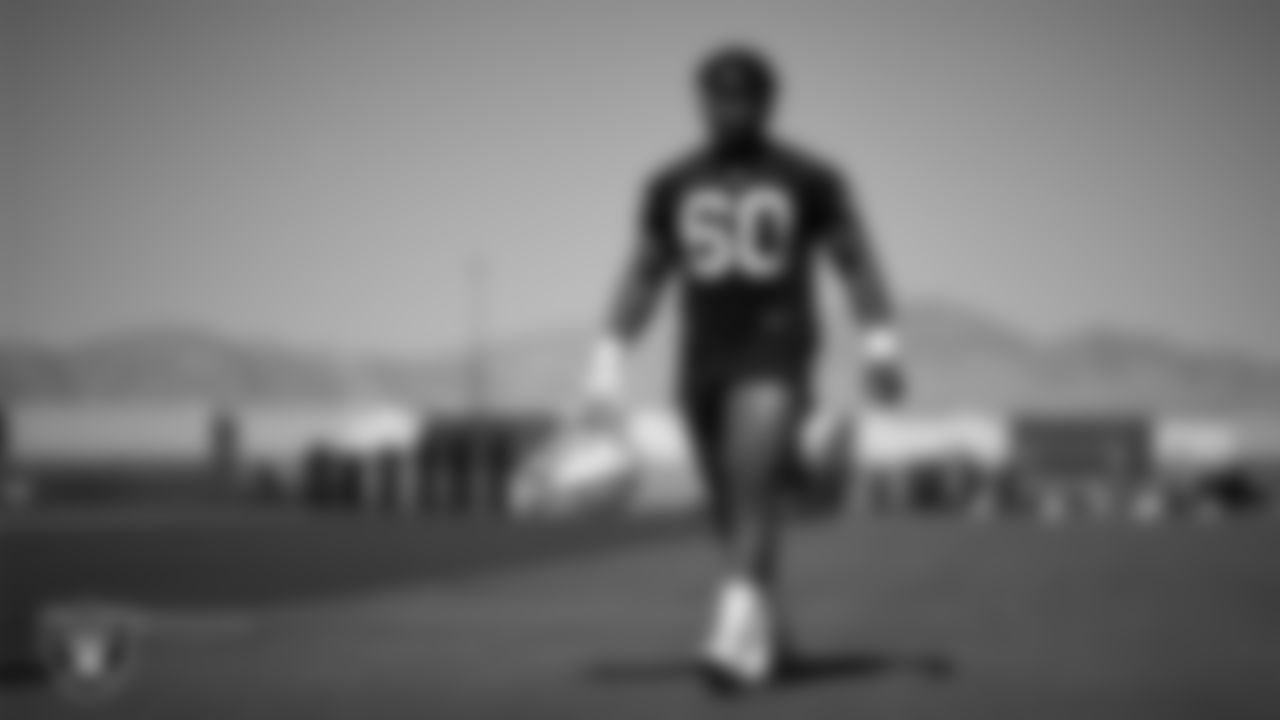
Las Vegas Raiders defensive tackle Tomari Fox (60) at an Organized Team Activity (OTA) at Intermountain Health Performance Center.

Las Vegas Raiders cornerback M.J. Devonshire (26) at an Organized Team Activity (OTA) at Intermountain Health Performance Center.

Las Vegas Raiders cornerback Sam Webb (27) at an Organized Team Activity (OTA) at Intermountain Health Performance Center.

Las Vegas Raiders wide receiver Michael Gallup (10) at an Organized Team Activity (OTA) at Intermountain Health Performance Center.
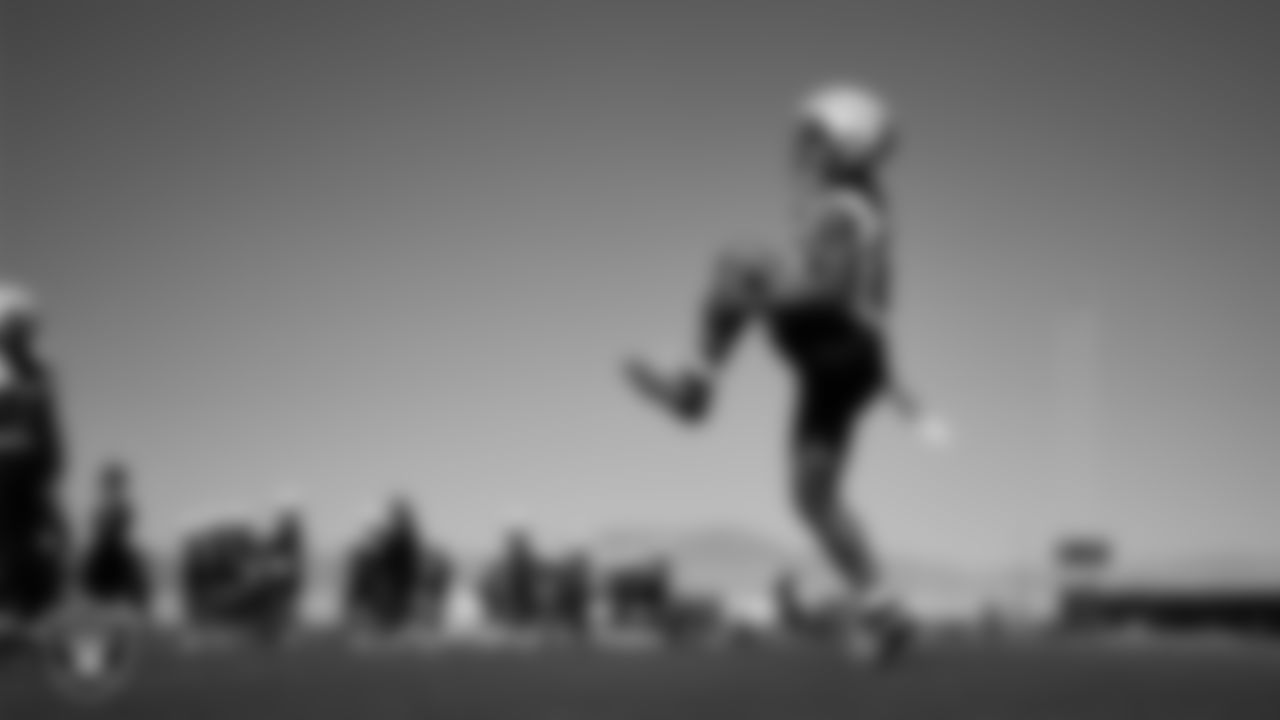
Las Vegas Raiders wide receiver Kristian Wilkerson (83) at an Organized Team Activity (OTA) at Intermountain Health Performance Center.

Las Vegas Raiders tackle Andrew Coker (73), guard Clark Barrington (64) and tackle DJ Glaze (71) at an Organized Team Activity (OTA) at Intermountain Health Performance Center.
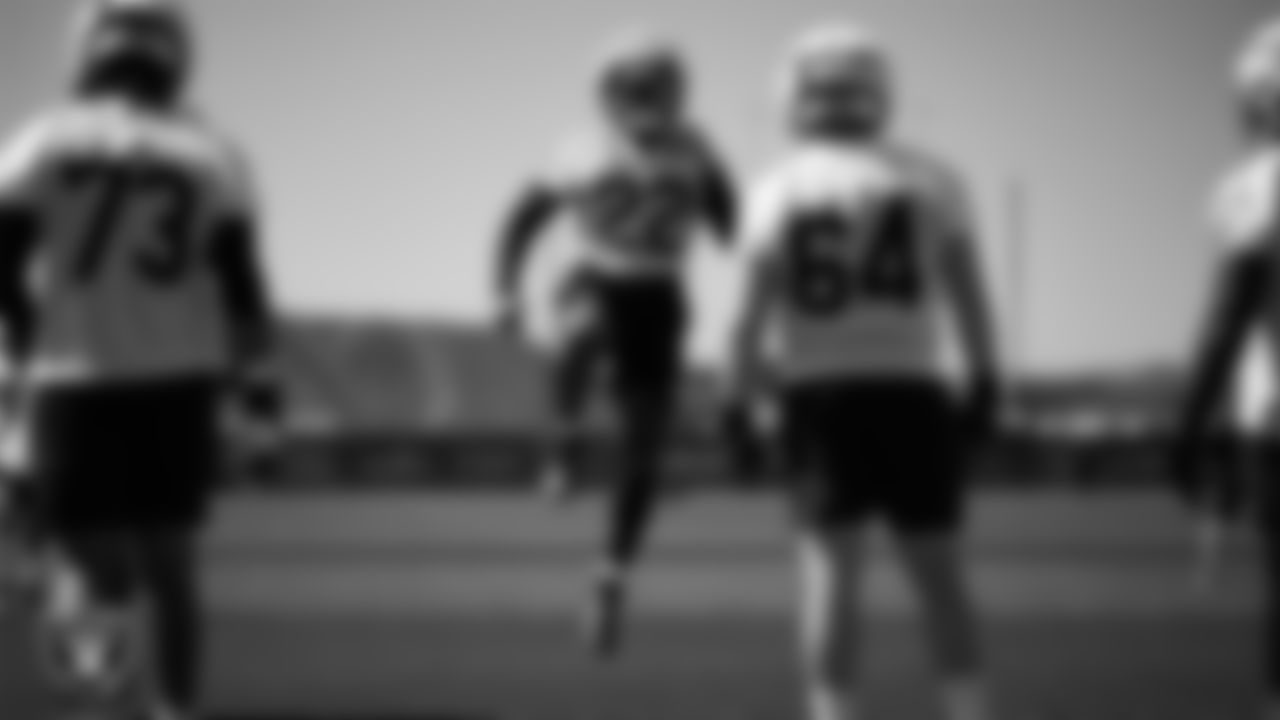
Las Vegas Raiders running back Alexander Mattison (22) at an Organized Team Activity (OTA) at Intermountain Health Performance Center.
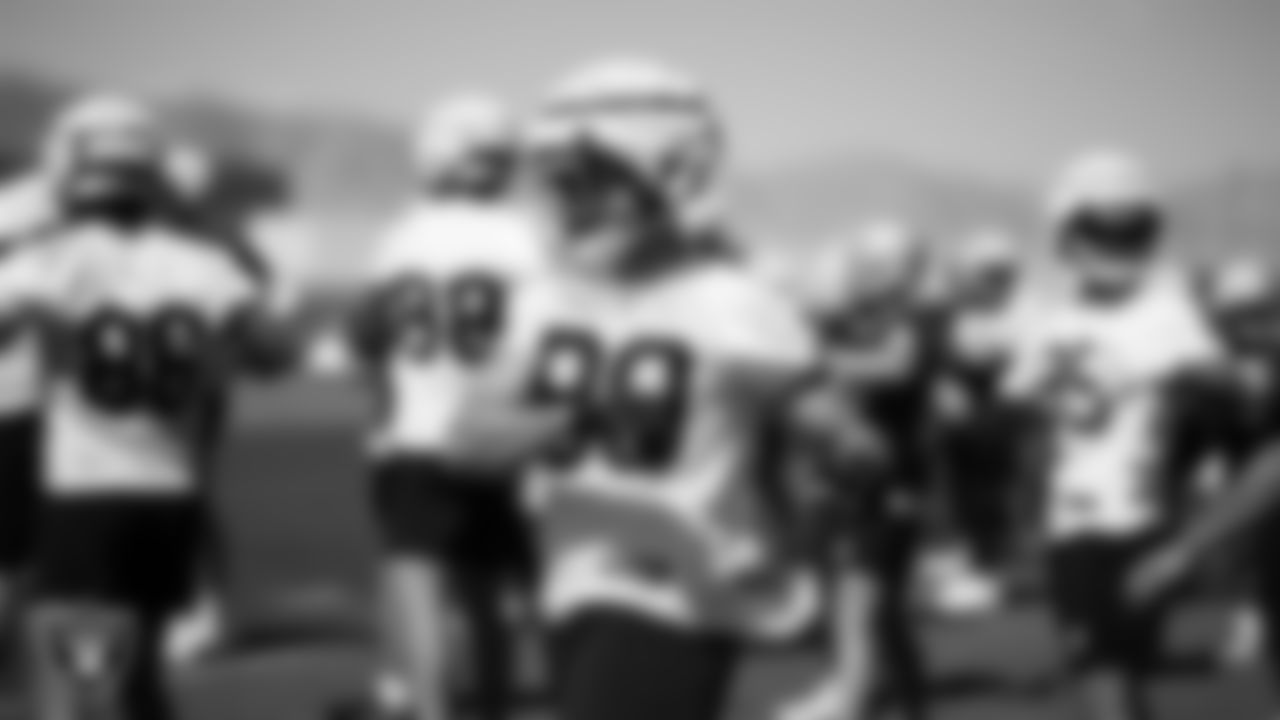
Las Vegas Raiders tight end Brock Bowers (89) at an Organized Team Activity (OTA) at Intermountain Health Performance Center.

Las Vegas Raiders defensive end Janarius Robinson (97) at an Organized Team Activity (OTA) at Intermountain Health Performance Center.

Las Vegas Raiders defensive lineman Adam Butler (69) at an Organized Team Activity (OTA) at Intermountain Health Performance Center.

Las Vegas Raiders cornerback Jakorian Bennett (0) at an Organized Team Activity (OTA) at Intermountain Health Performance Center.
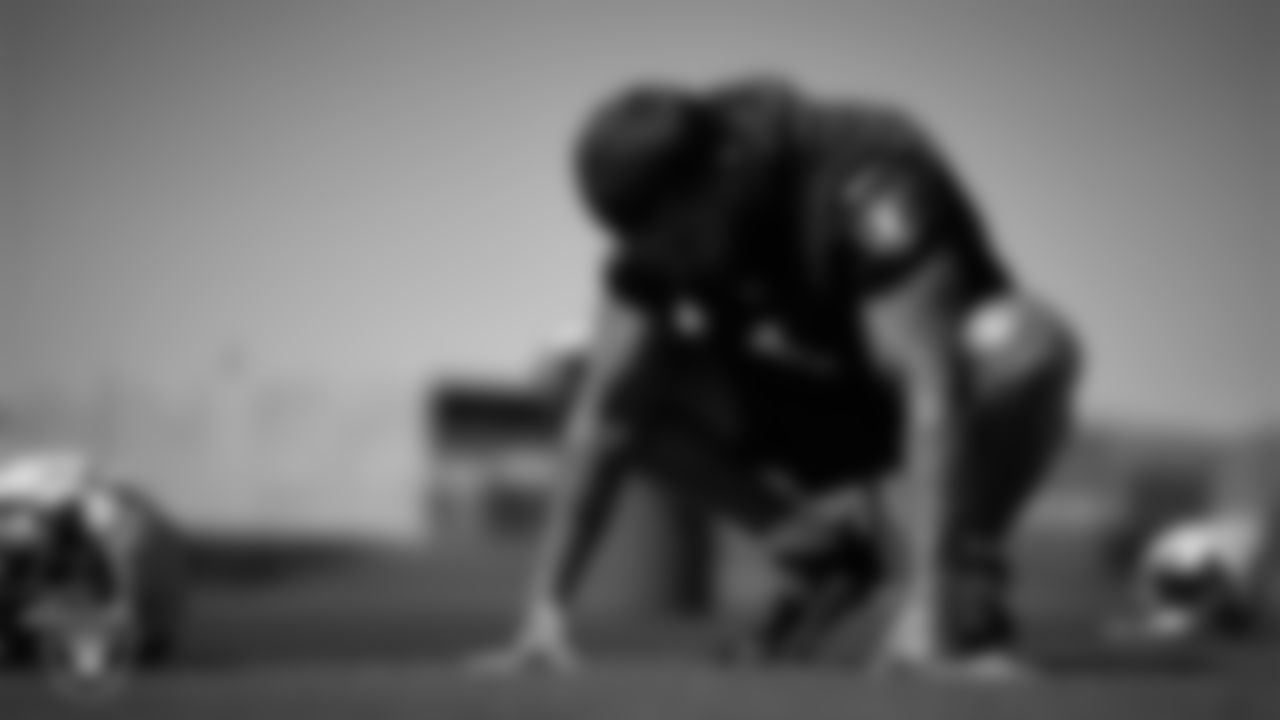
Las Vegas Raiders safety Marcus Epps (1) at an Organized Team Activity (OTA) at Intermountain Health Performance Center.

Las Vegas Raiders cornerback Nate Hobbs (39) at an Organized Team Activity (OTA) at Intermountain Health Performance Center.
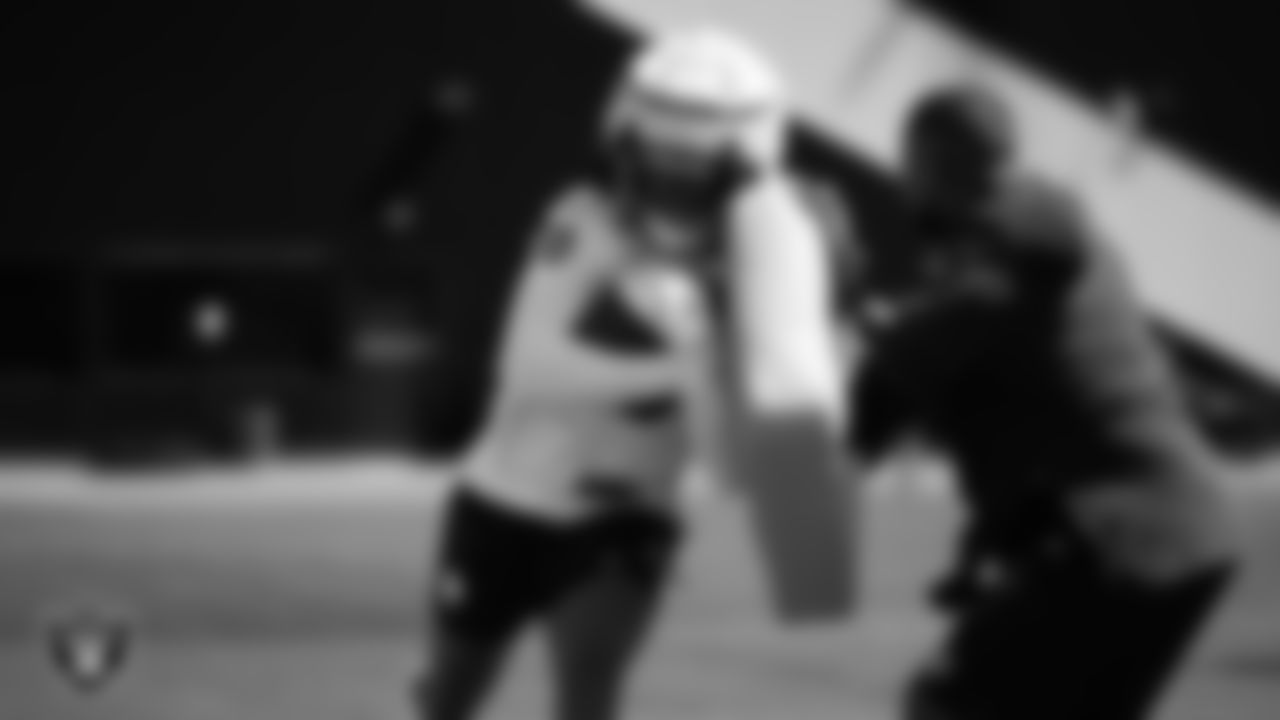
Las Vegas Raiders wide receiver Jakobi Meyers (16) at an Organized Team Activity (OTA) at Intermountain Health Performance Center.

Las Vegas Raiders wide receiver Tre Tucker (11) at an Organized Team Activity (OTA) at Intermountain Health Performance Center.
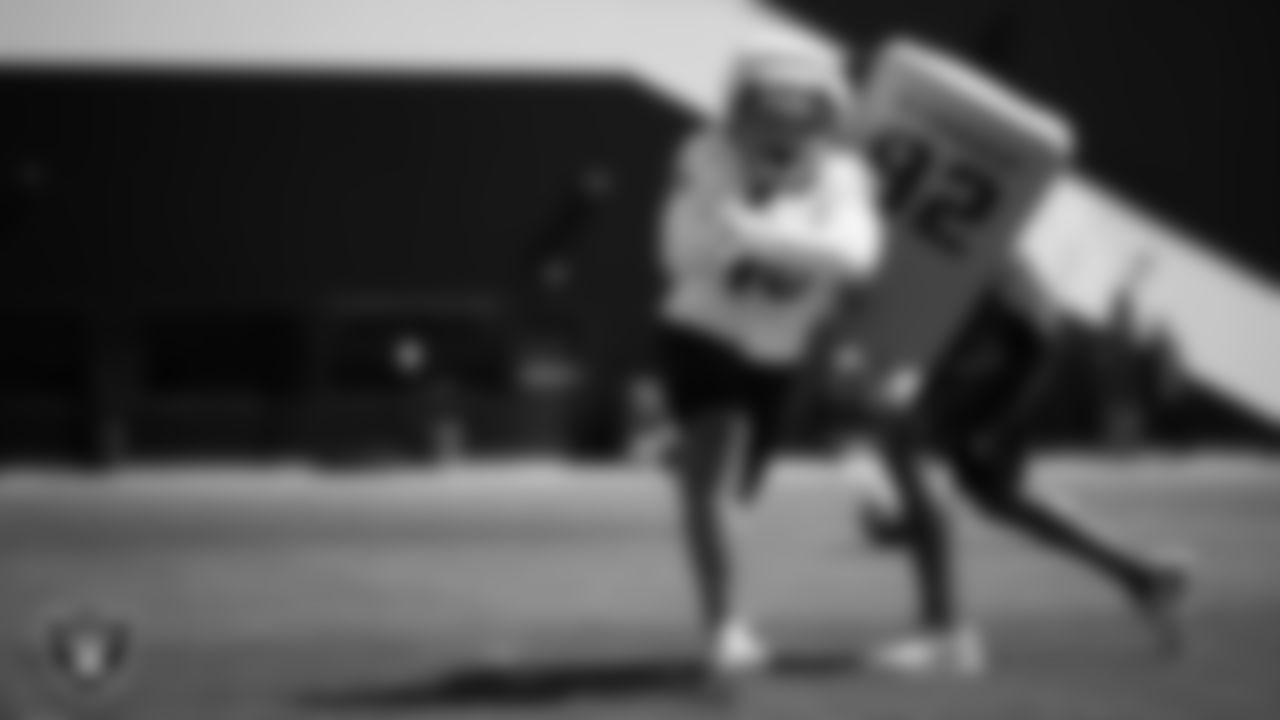
Las Vegas Raiders wide receiver DJ Turner (19) at an Organized Team Activity (OTA) at Intermountain Health Performance Center.
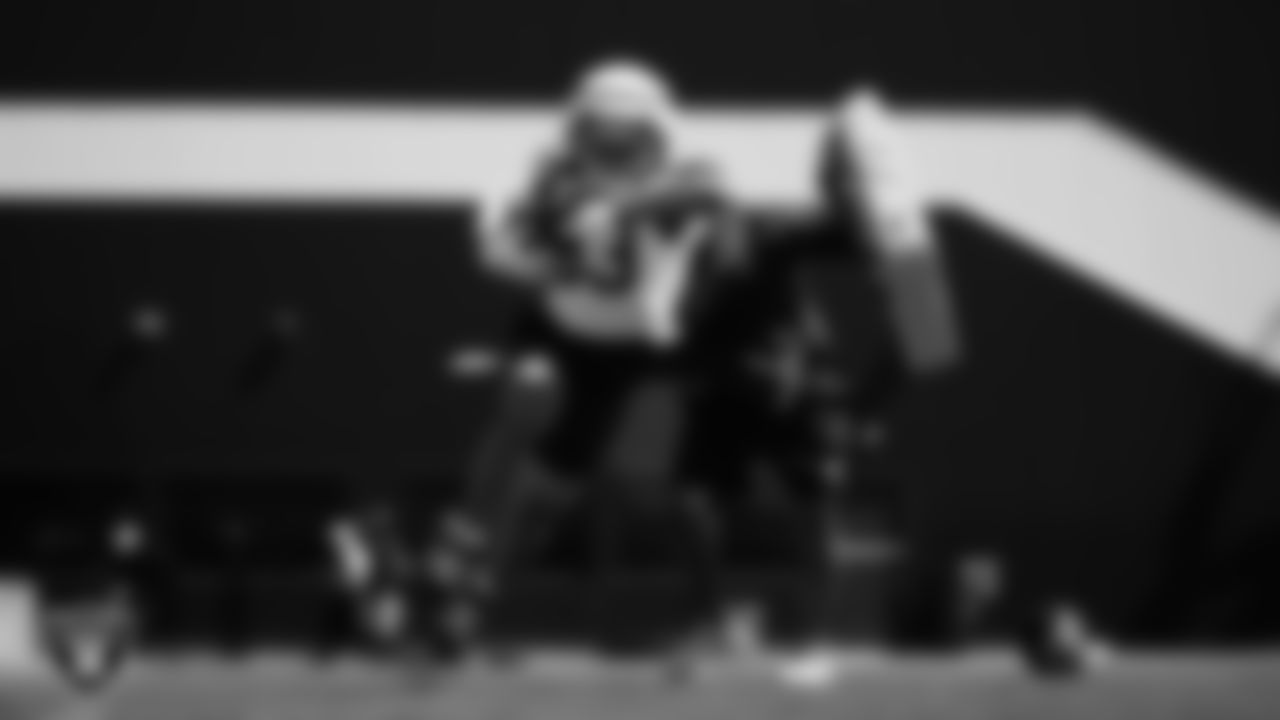
Las Vegas Raiders wide receiver Kristian Wilkerson (83) at an Organized Team Activity (OTA) at Intermountain Health Performance Center.

Las Vegas Raiders wide receiver Ramel Keyton (82) at an Organized Team Activity (OTA) at Intermountain Health Performance Center.
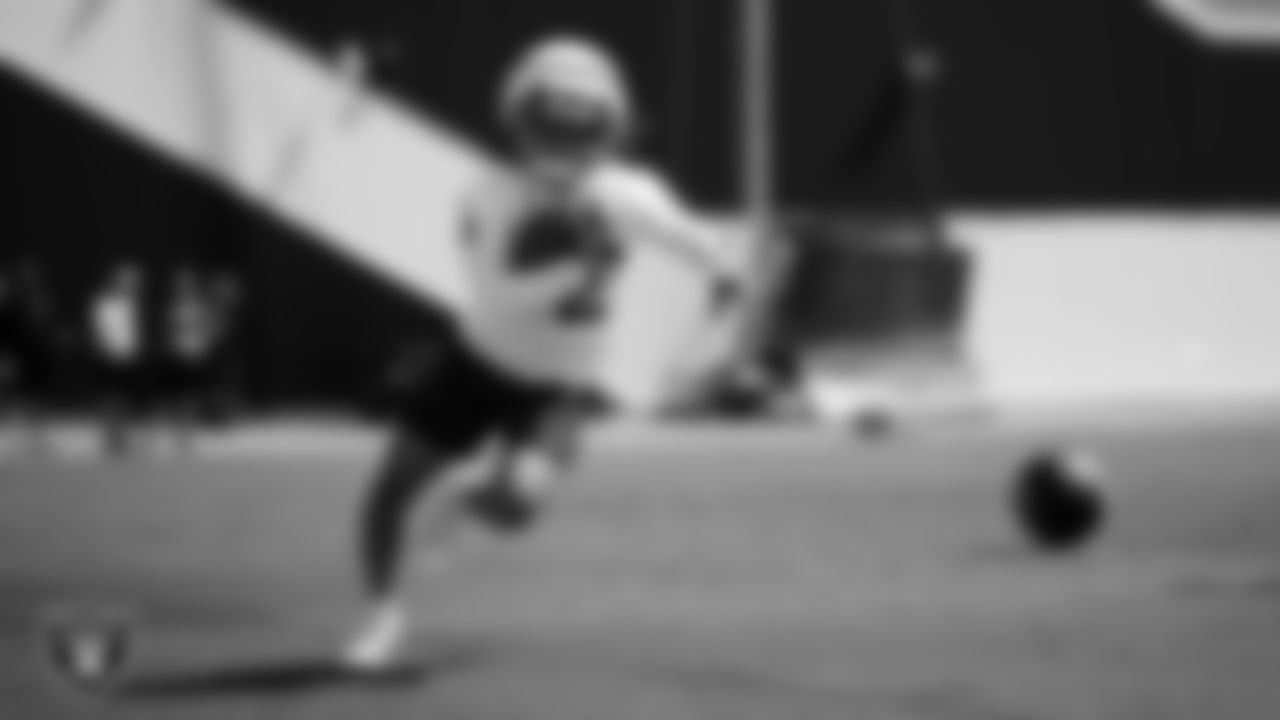
Las Vegas Raiders wide receiver Tyreik McAllister (32) at an Organized Team Activity (OTA) at Intermountain Health Performance Center.
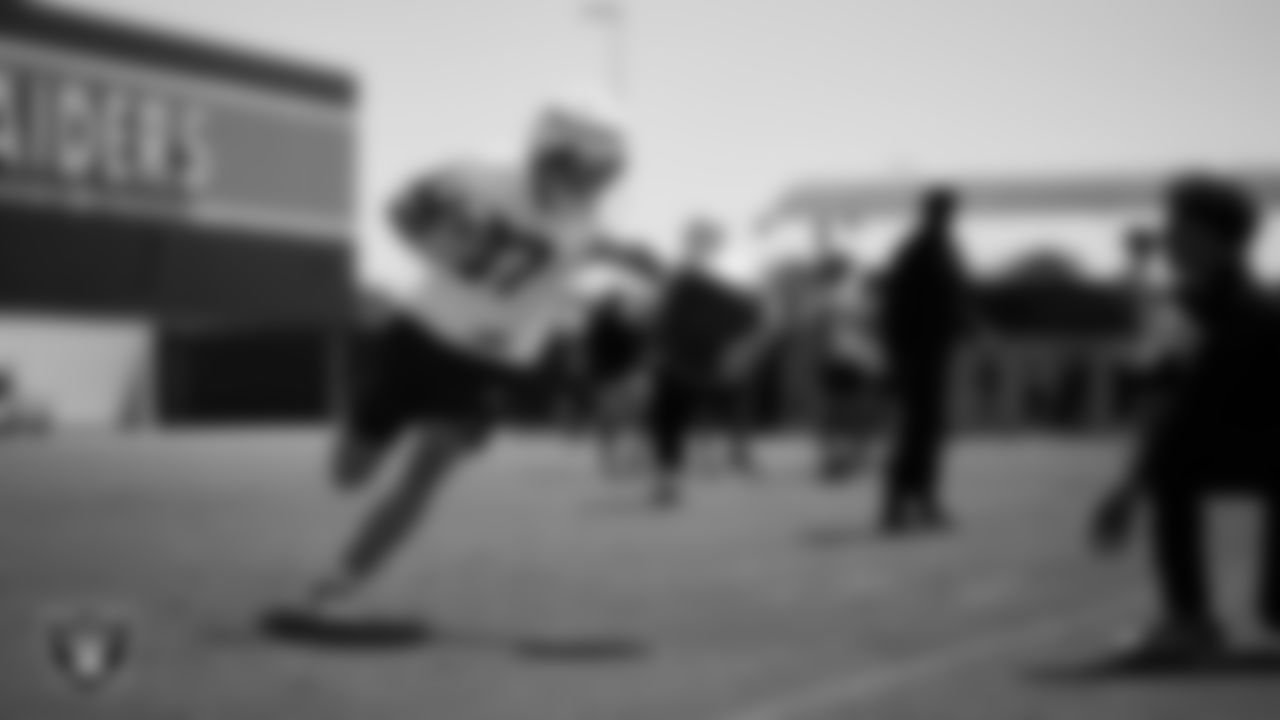
Las Vegas Raiders tight end Michael Mayer (87) at an Organized Team Activity (OTA) at Intermountain Health Performance Center.
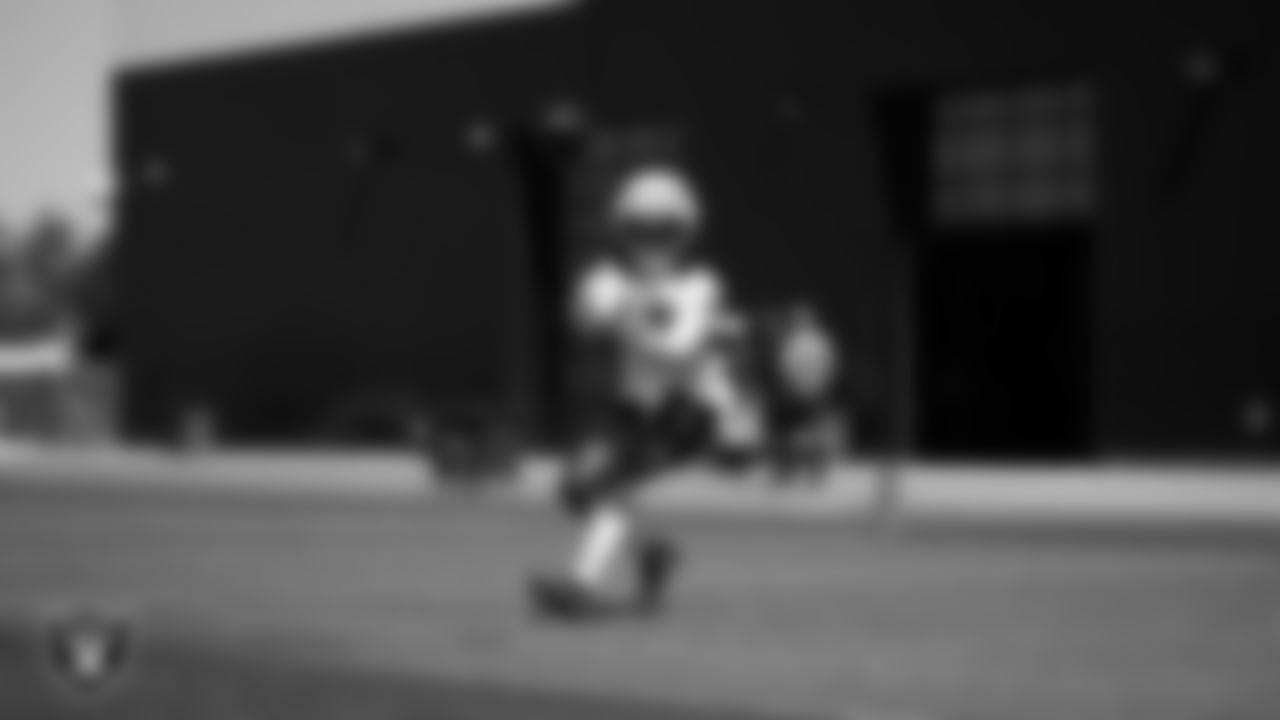
Las Vegas Raiders wide receiver Jakobi Meyers (16) at an Organized Team Activity (OTA) at Intermountain Health Performance Center.
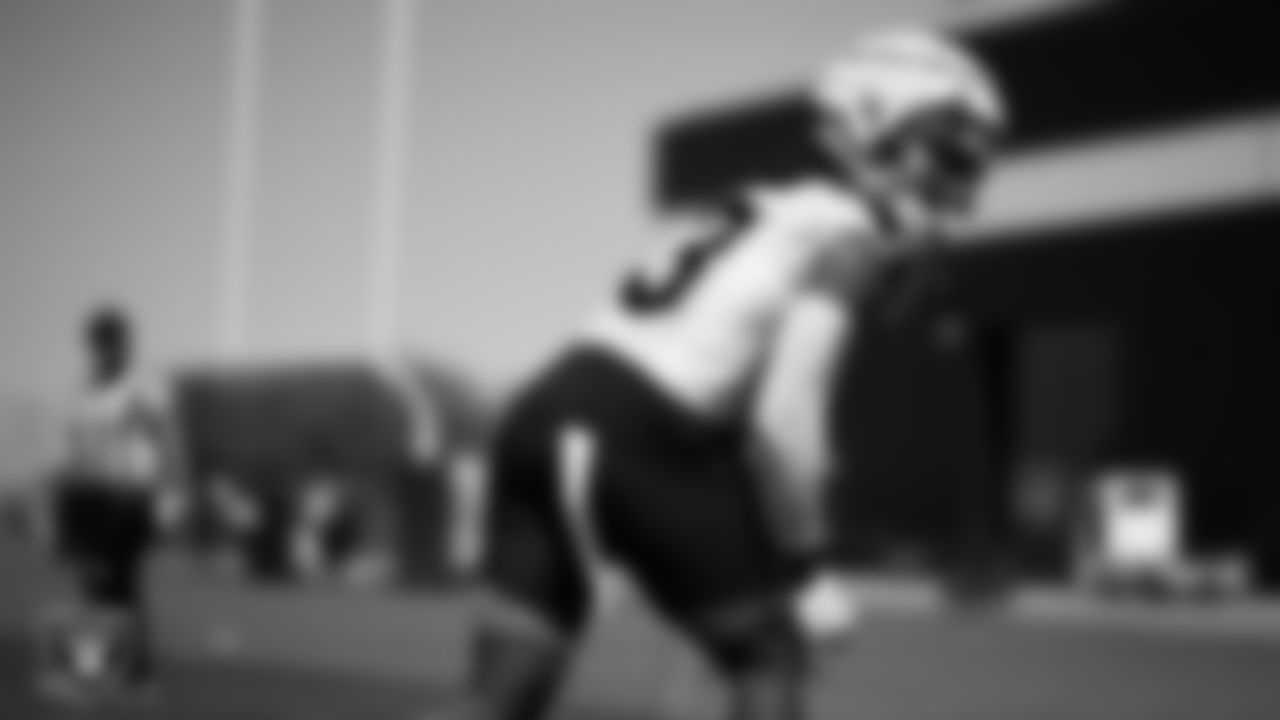
Las Vegas Raiders wide receiver Kristian Wilkerson (83) at an Organized Team Activity (OTA) at Intermountain Health Performance Center.
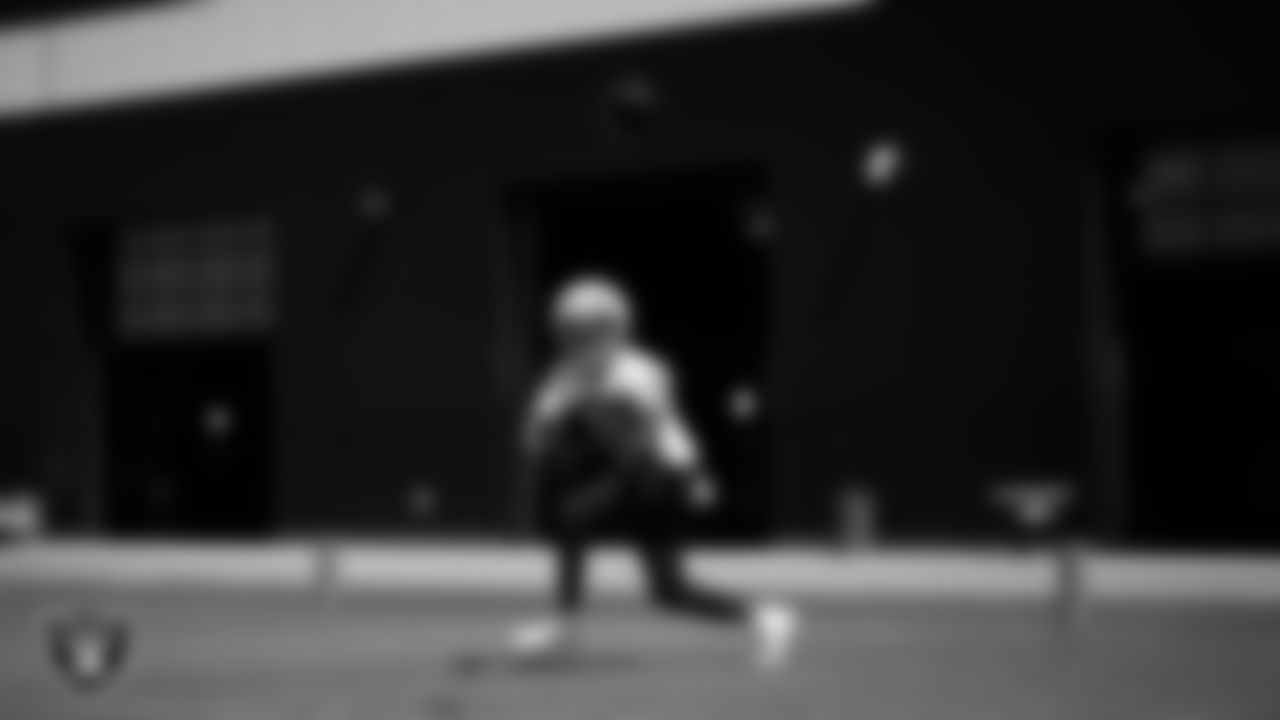
Las Vegas Raiders wide receiver Ramel Keyton (82) at an Organized Team Activity (OTA) at Intermountain Health Performance Center.

Las Vegas Raiders wide receiver Tyreik McAllister (32) at an Organized Team Activity (OTA) at Intermountain Health Performance Center.
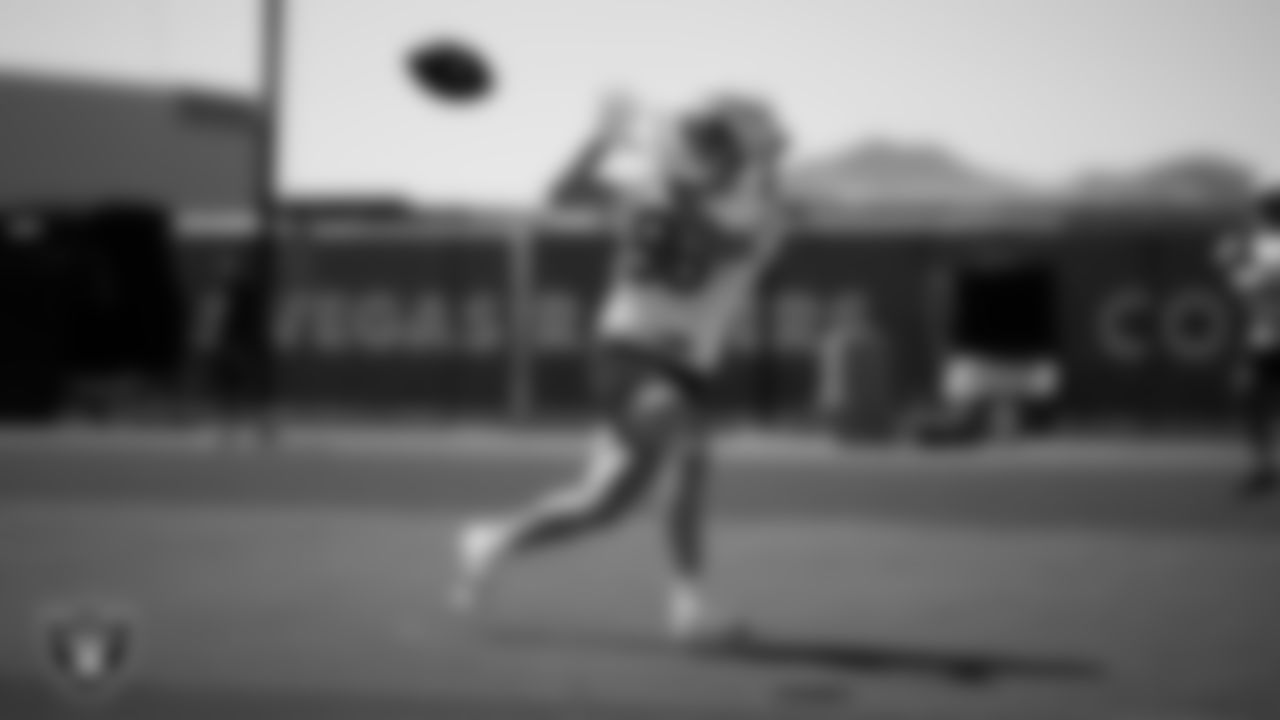
Las Vegas Raiders tight end John Samuel Shenker (86) at an Organized Team Activity (OTA) at Intermountain Health Performance Center.

Las Vegas Raiders tight end Zach Gentry (88) at an Organized Team Activity (OTA) at Intermountain Health Performance Center.
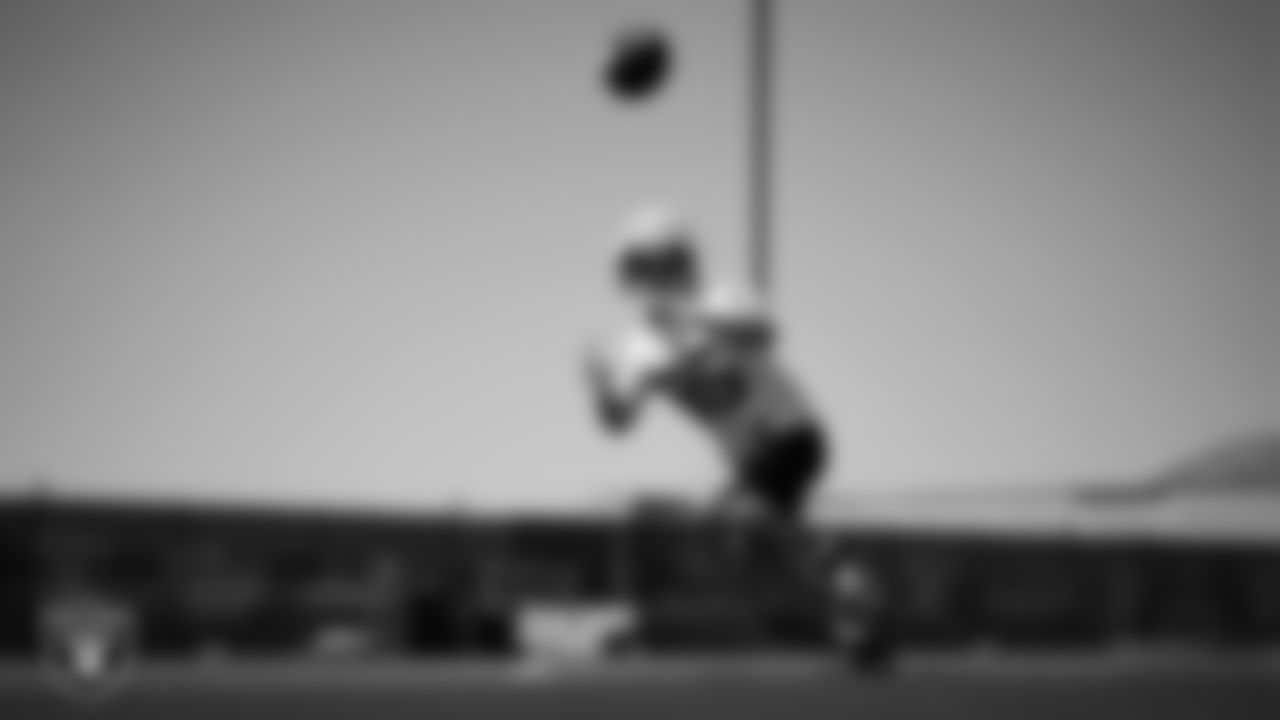
Las Vegas Raiders tight end Cole Fotheringham (85) at an Organized Team Activity (OTA) at Intermountain Health Performance Center.
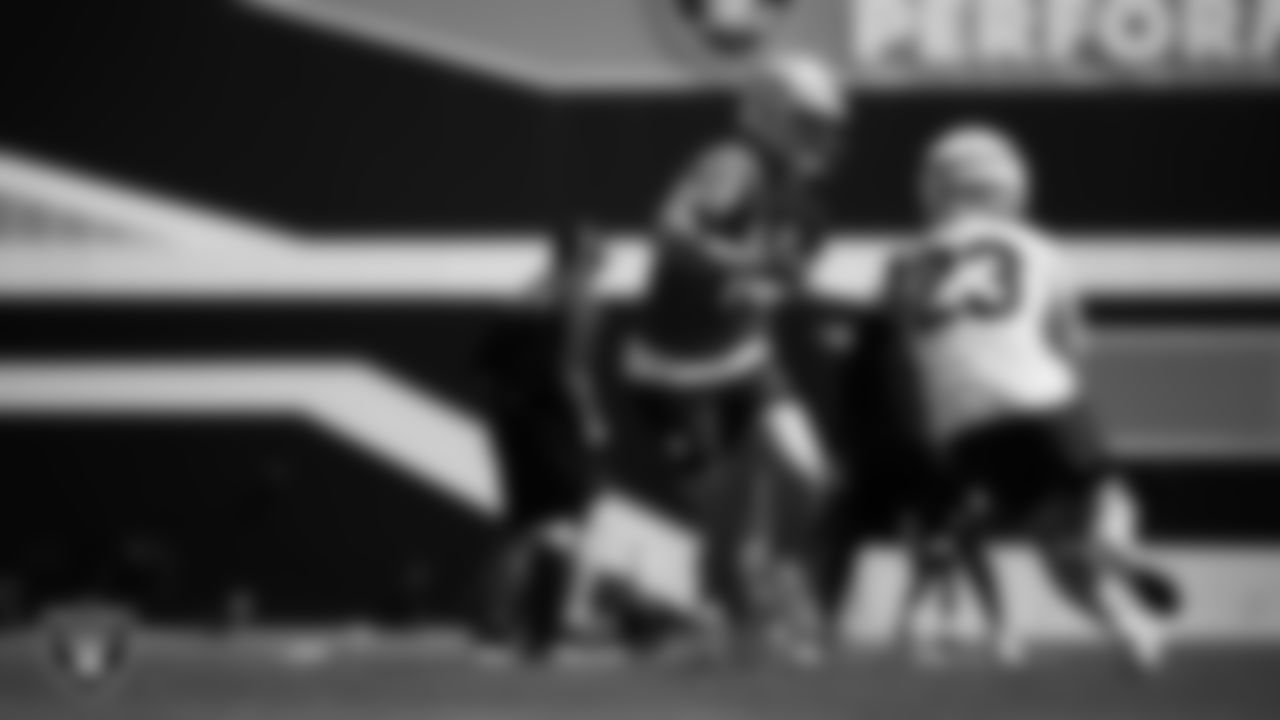
Las Vegas Raiders quarterback Carter Bradley (14) and running back Dylan Laube (23) at an Organized Team Activity (OTA) at Intermountain Health Performance Center.

Las Vegas Raiders running back Brittain Brown (38) at an Organized Team Activity (OTA) at Intermountain Health Performance Center.
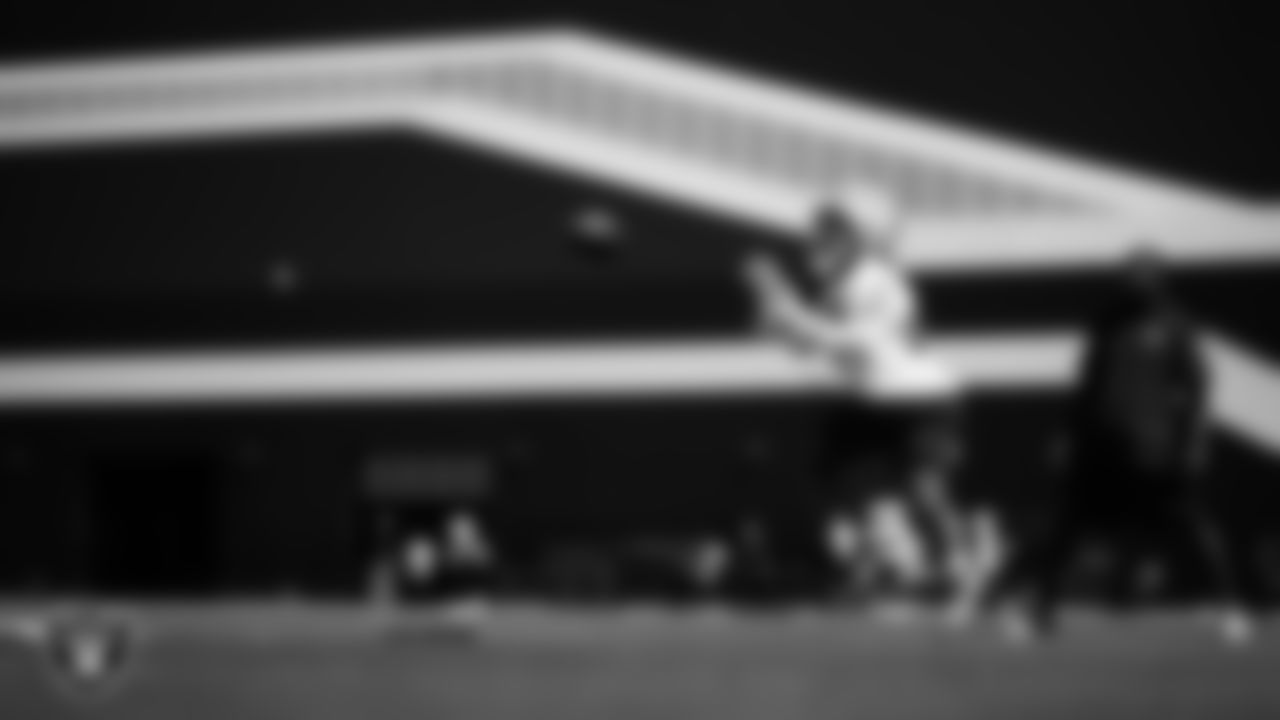
Las Vegas Raiders running back Sincere McCormick (28) at an Organized Team Activity (OTA) at Intermountain Health Performance Center.
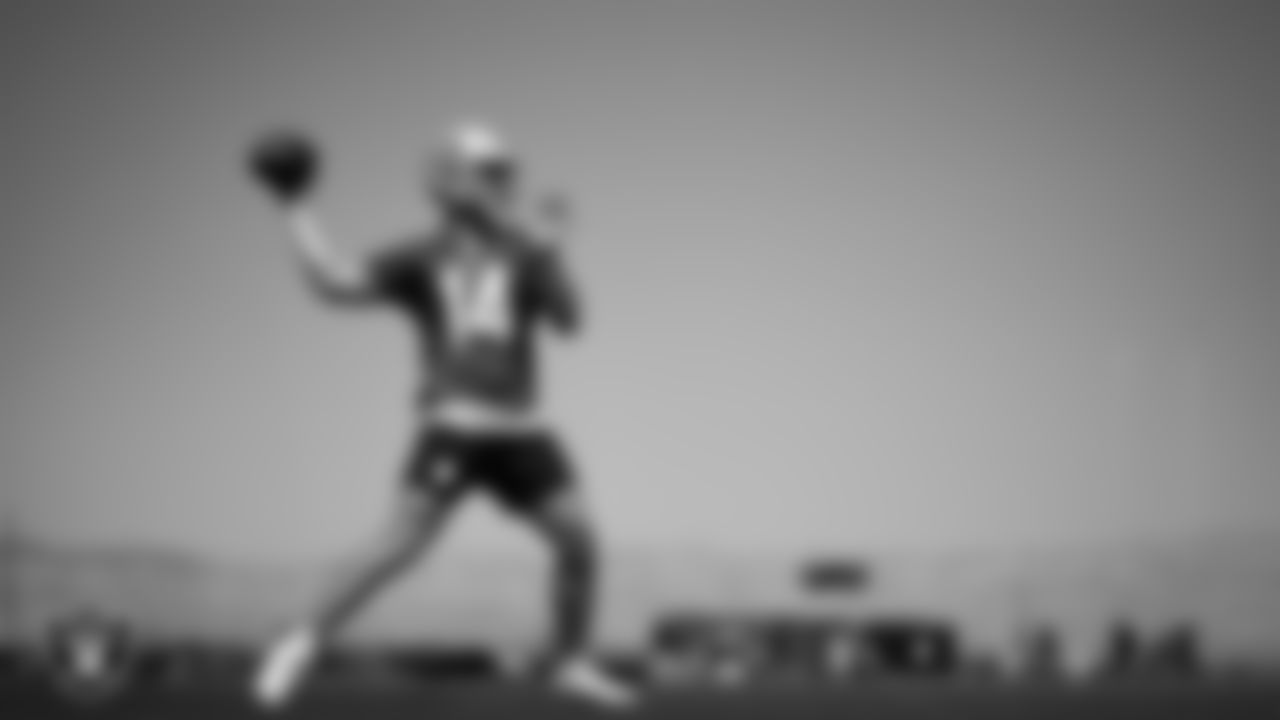
Las Vegas Raiders quarterback Carter Bradley (14) at an Organized Team Activity (OTA) at Intermountain Health Performance Center.
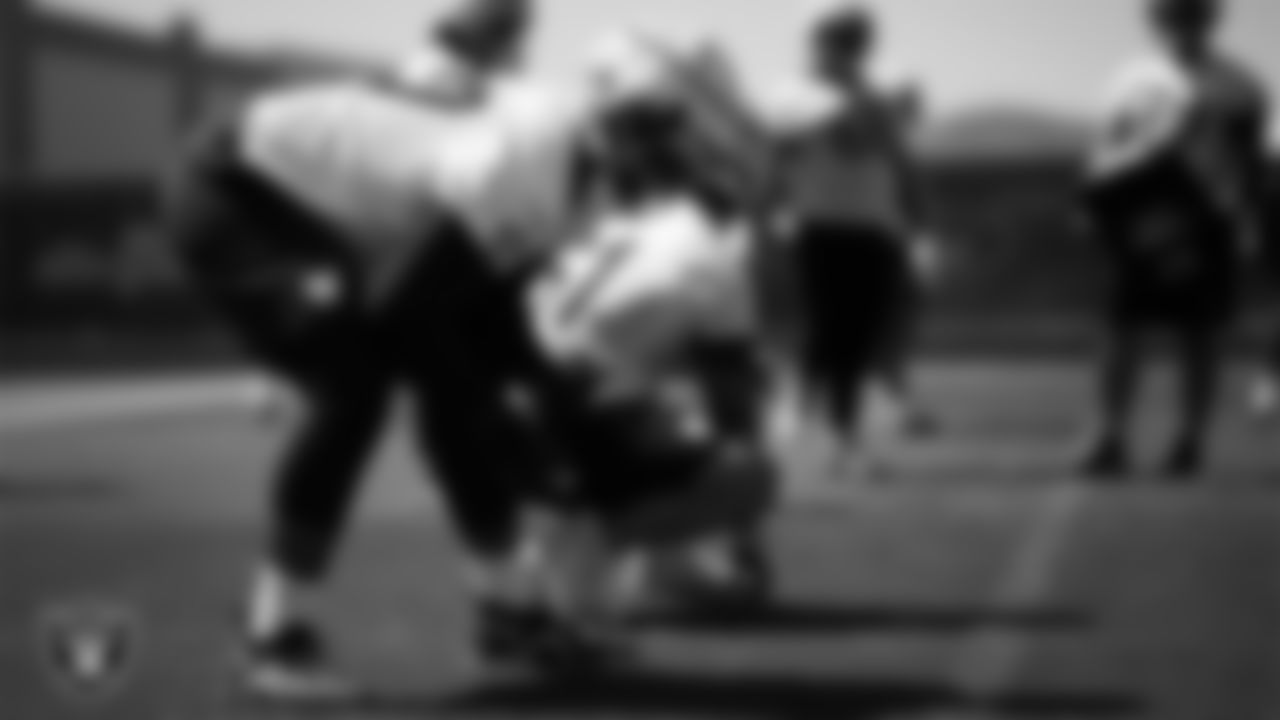
Las Vegas Raiders tackle Thayer Munford Jr. (77) at an Organized Team Activity (OTA) at Intermountain Health Performance Center.
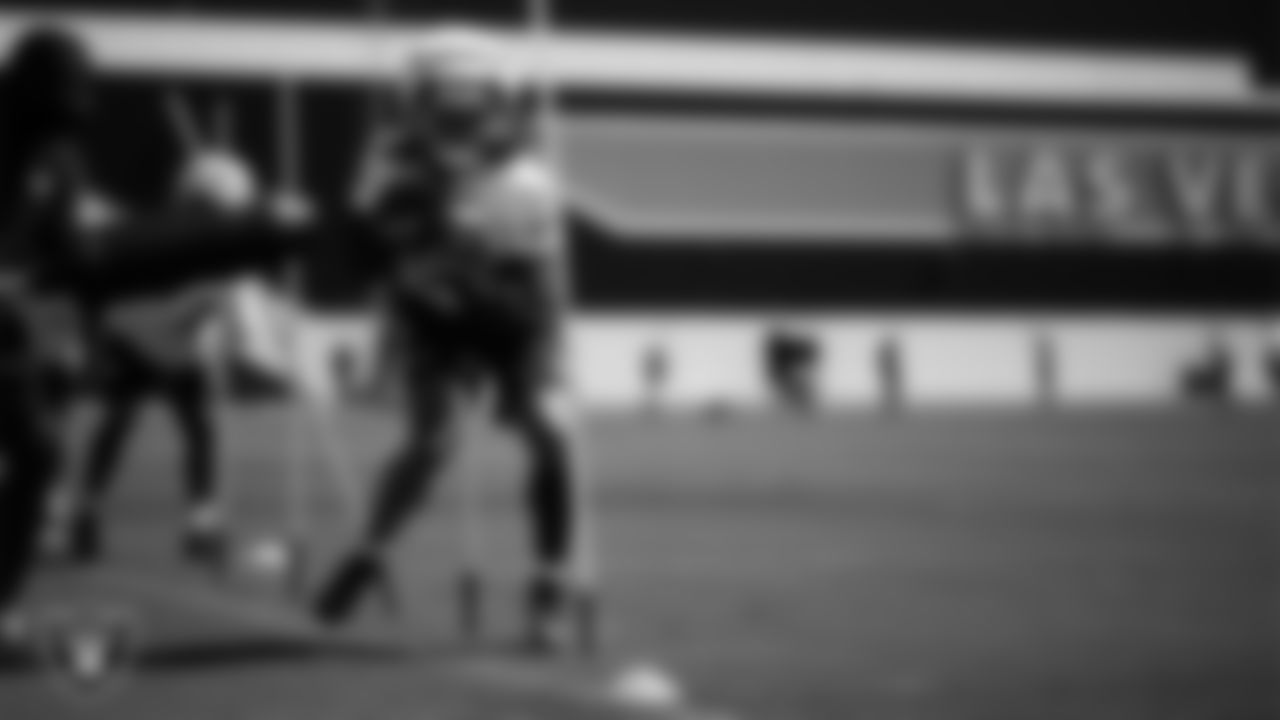
Las Vegas Raiders running back Alexander Mattison (22) at an Organized Team Activity (OTA) at Intermountain Health Performance Center.
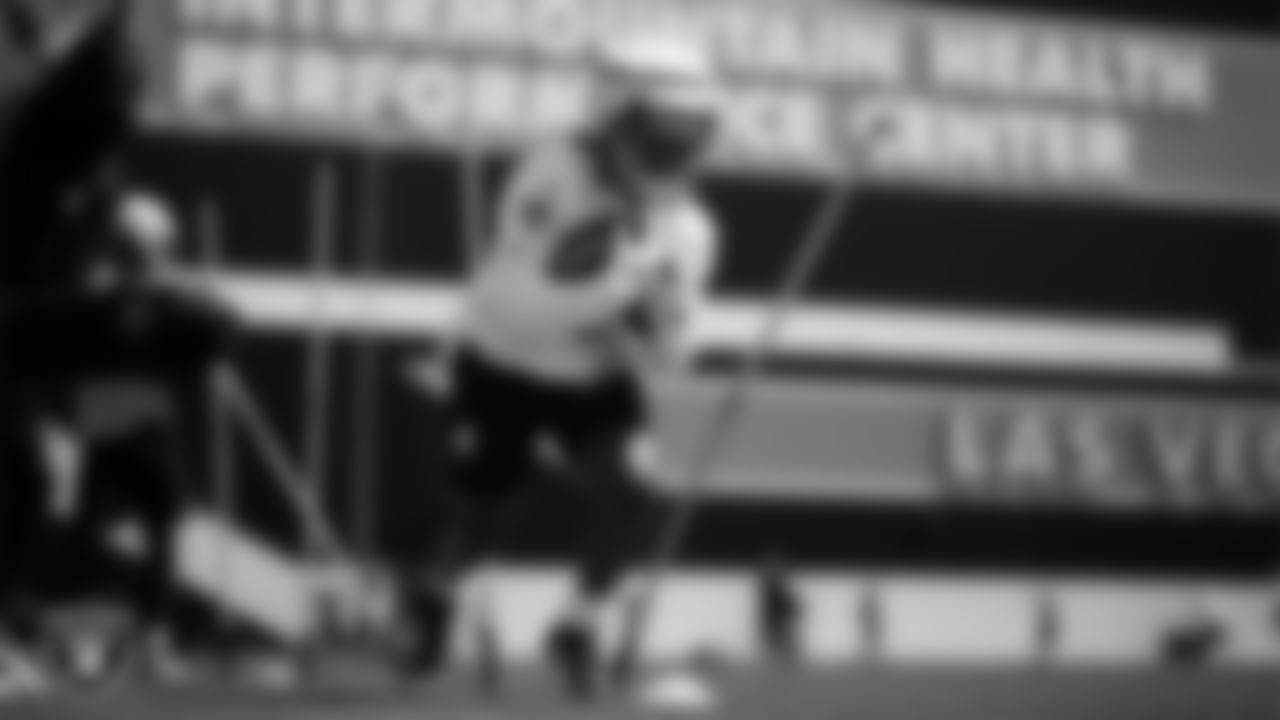
Las Vegas Raiders running back Sincere McCormick (28) at an Organized Team Activity (OTA) at Intermountain Health Performance Center.

Las Vegas Raiders running back Brittain Brown (38) at an Organized Team Activity (OTA) at Intermountain Health Performance Center.

Las Vegas Raiders running back Sincere McCormick (28) at an Organized Team Activity (OTA) at Intermountain Health Performance Center.

Las Vegas Raiders running back Brittain Brown (38) at an Organized Team Activity (OTA) at Intermountain Health Performance Center.
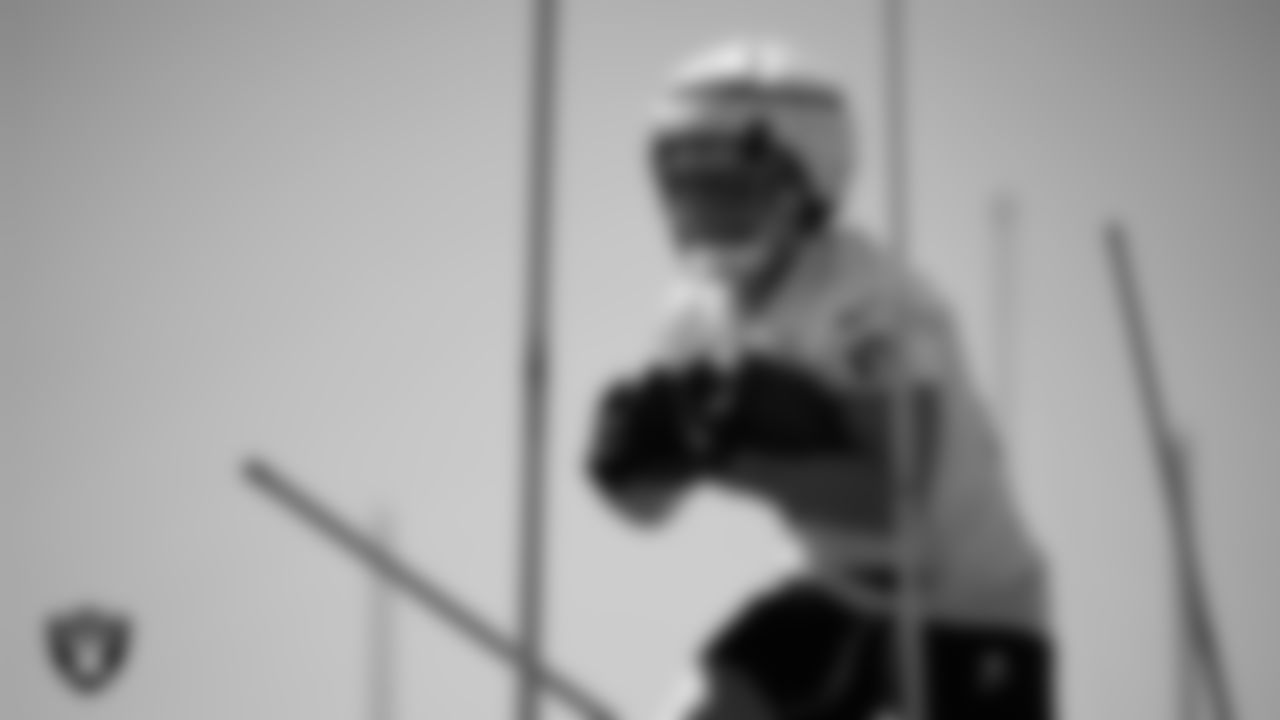
Las Vegas Raiders running back Dylan Laube (23) at an Organized Team Activity (OTA) at Intermountain Health Performance Center.
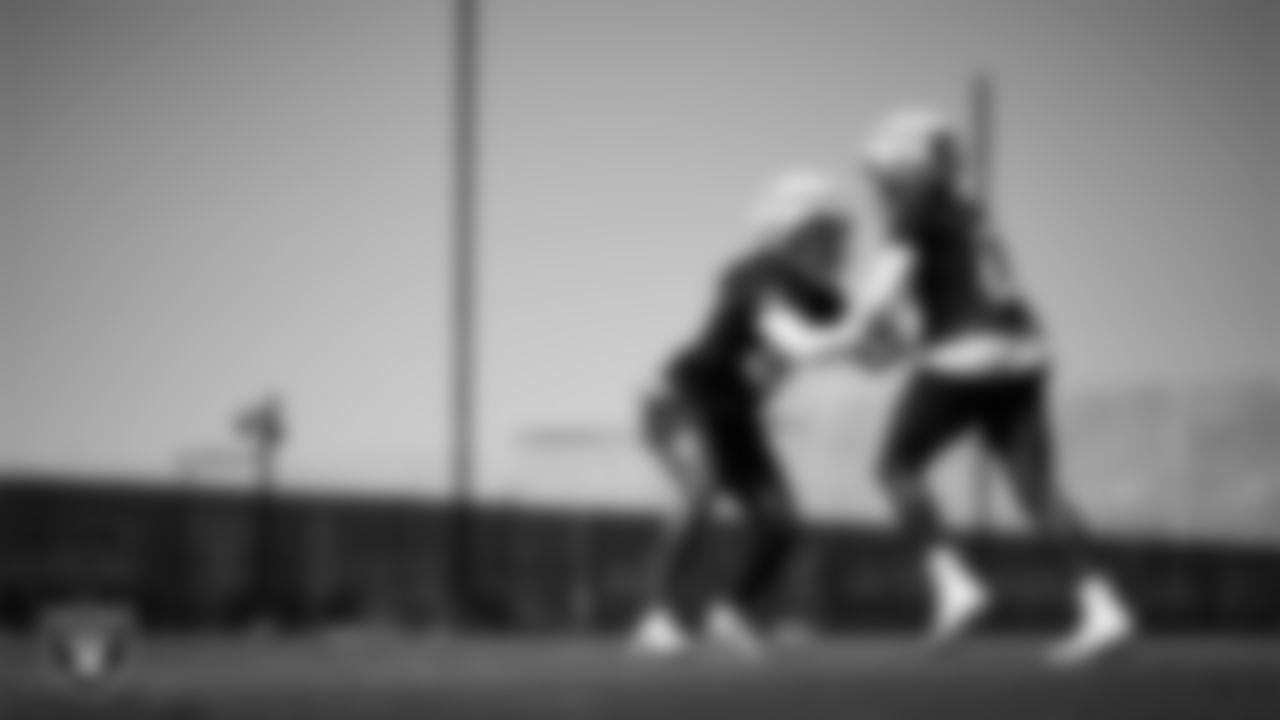
Las Vegas Raiders cornerback Ja'Quan Sheppard (46) and cornerback Jakorian Bennett (0) at an Organized Team Activity (OTA) at Intermountain Health Performance Center.
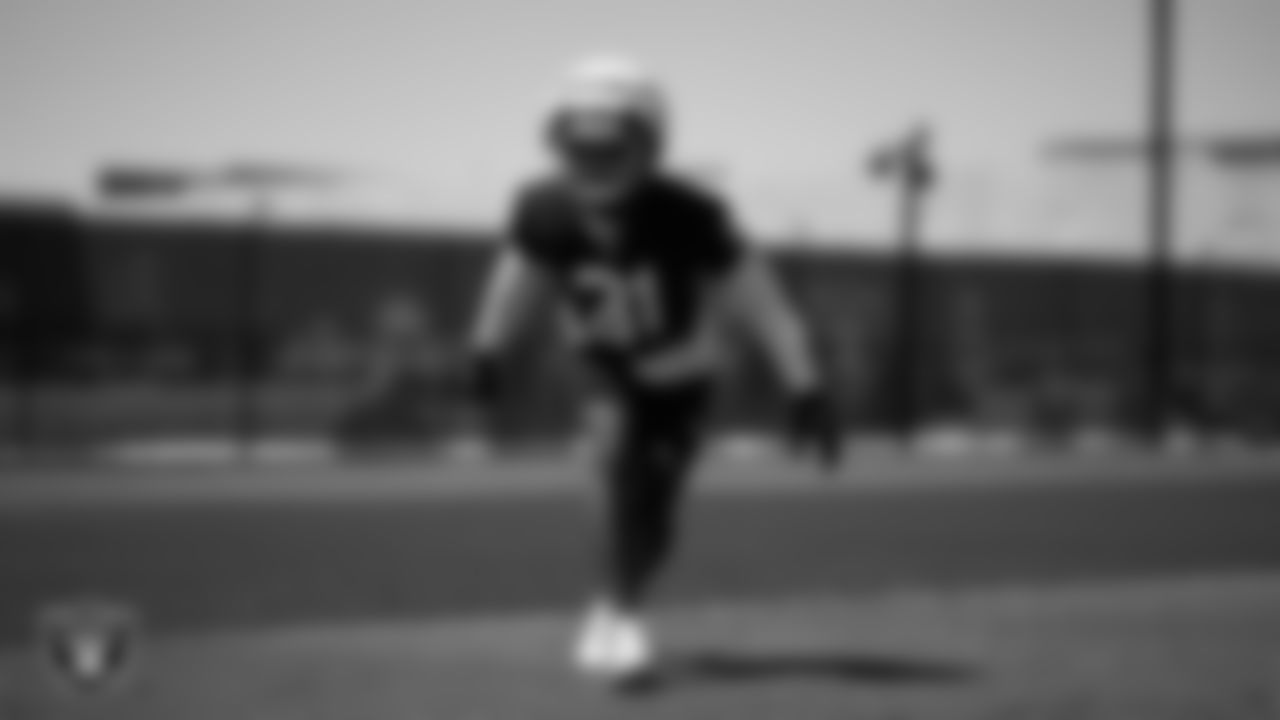
Las Vegas Raiders cornerback Brandon Facyson (31) at an Organized Team Activity (OTA) at Intermountain Health Performance Center.
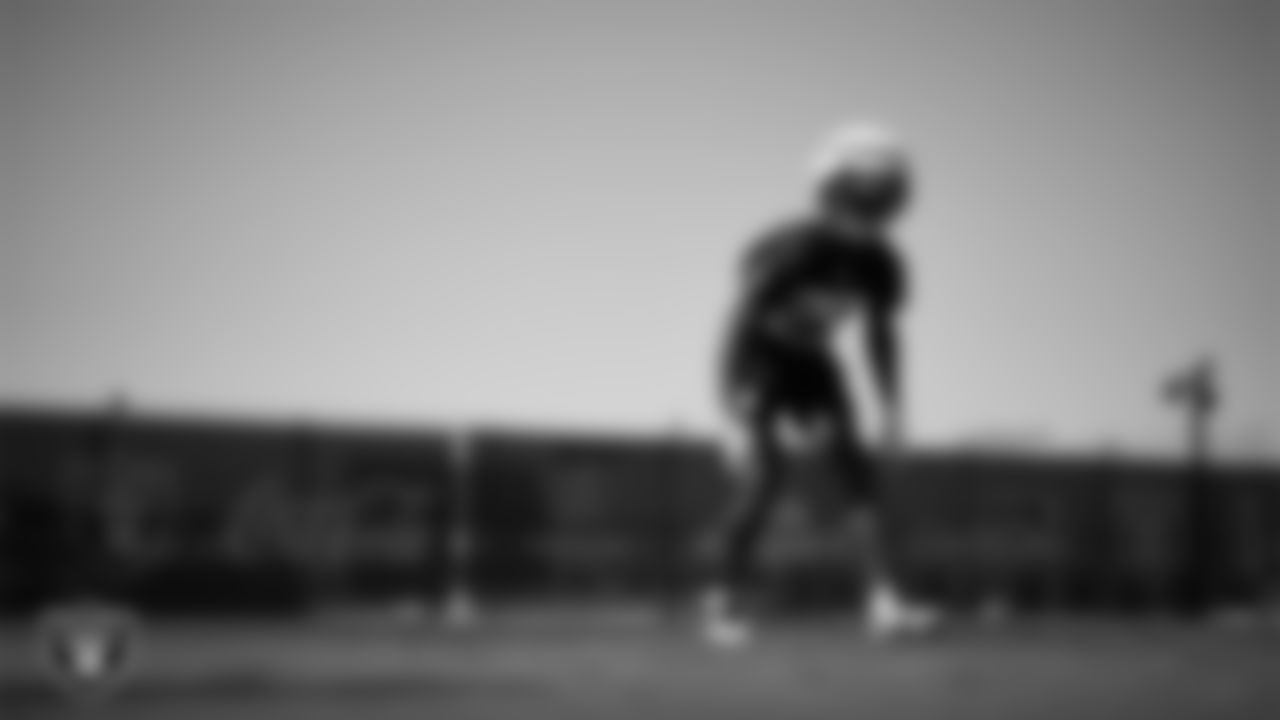
Las Vegas Raiders cornerback Decamerion Richardson (25) at an Organized Team Activity (OTA) at Intermountain Health Performance Center.

Las Vegas Raiders cornerback Jakorian Bennett (0) at an Organized Team Activity (OTA) at Intermountain Health Performance Center.

Las Vegas Raiders punter AJ Cole (6) at an Organized Team Activity (OTA) at Intermountain Health Performance Center.

Las Vegas Raiders defensive lineman David Agoha (55) at an Organized Team Activity (OTA) at Intermountain Health Performance Center.

Las Vegas Raiders kicker Daniel Carlson (2) and punter AJ Cole (6) at an Organized Team Activity (OTA) at Intermountain Health Performance Center.
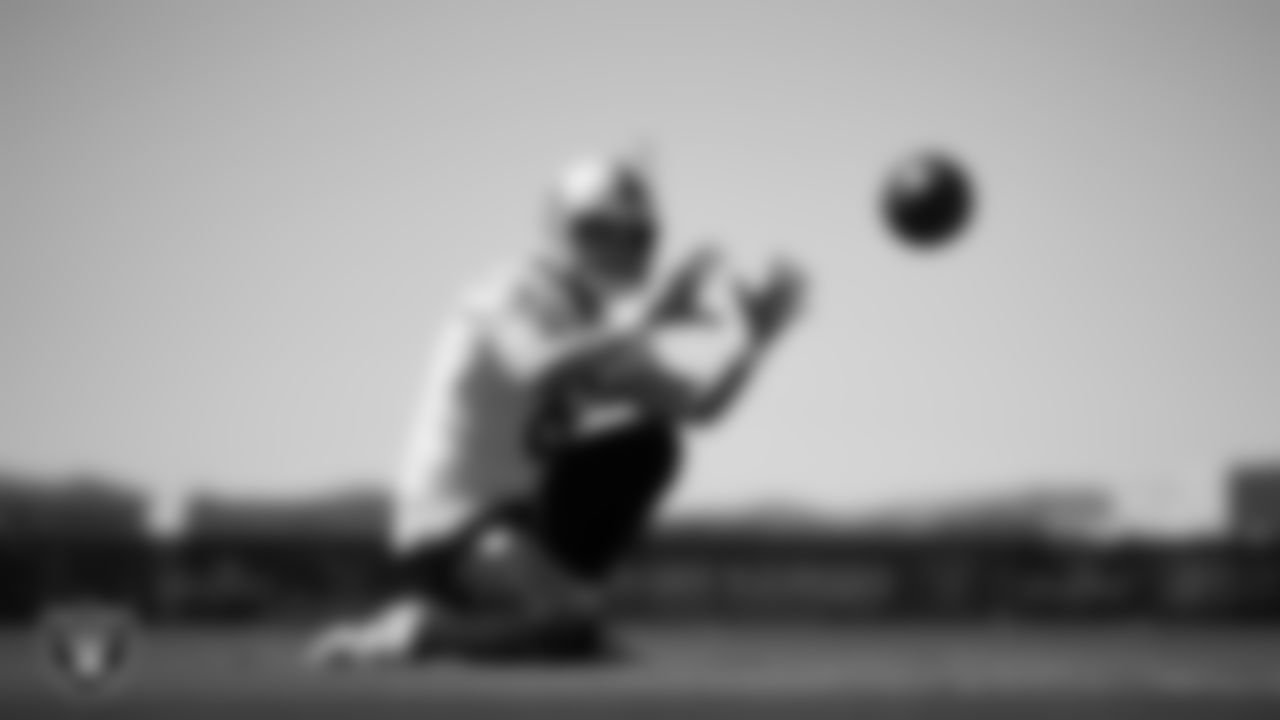
Las Vegas Raiders punter AJ Cole (6) at an Organized Team Activity (OTA) at Intermountain Health Performance Center.

Las Vegas Raiders punter AJ Cole (6) at an Organized Team Activity (OTA) at Intermountain Health Performance Center.
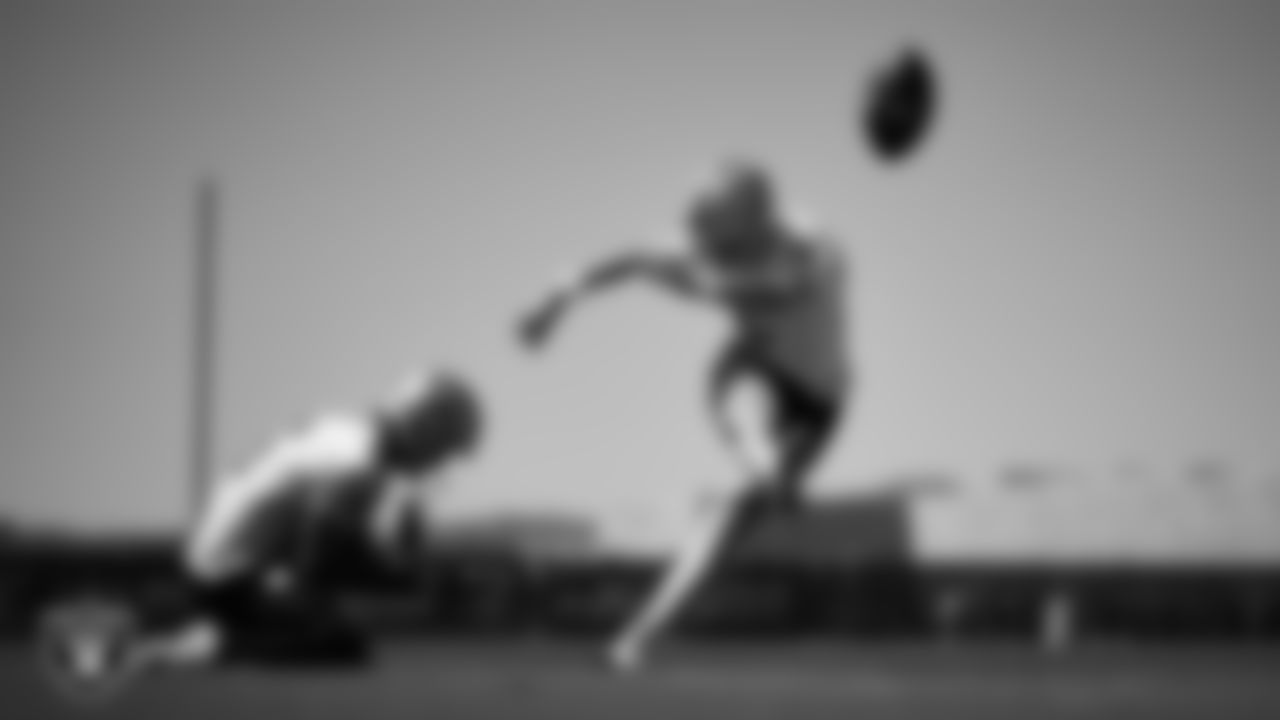
Las Vegas Raiders punter AJ Cole (6) and kicker Daniel Carlson (2) at an Organized Team Activity (OTA) at Intermountain Health Performance Center.

Las Vegas Raiders kicker Daniel Carlson (2) at an Organized Team Activity (OTA) at Intermountain Health Performance Center.

Las Vegas Raiders kicker Daniel Carlson (2) at an Organized Team Activity (OTA) at Intermountain Health Performance Center.

Las Vegas Raiders offensive coordinator Luke Getsy at an Organized Team Activity (OTA) at Intermountain Health Performance Center.

Las Vegas Raiders wide receiver Tre Tucker (11) at an Organized Team Activity (OTA) at Intermountain Health Performance Center.

Las Vegas Raiders wide receiver Jeff Foreman (80) at an Organized Team Activity (OTA) at Intermountain Health Performance Center.

Las Vegas Raiders tackle DJ Glaze (71) and offensive coordinator Luke Getsy at an Organized Team Activity (OTA) at Intermountain Health Performance Center.

Las Vegas Raiders offensive coordinator Luke Getsy and guard Jackson Powers-Johnson (70) at an Organized Team Activity (OTA) at Intermountain Health Performance Center.
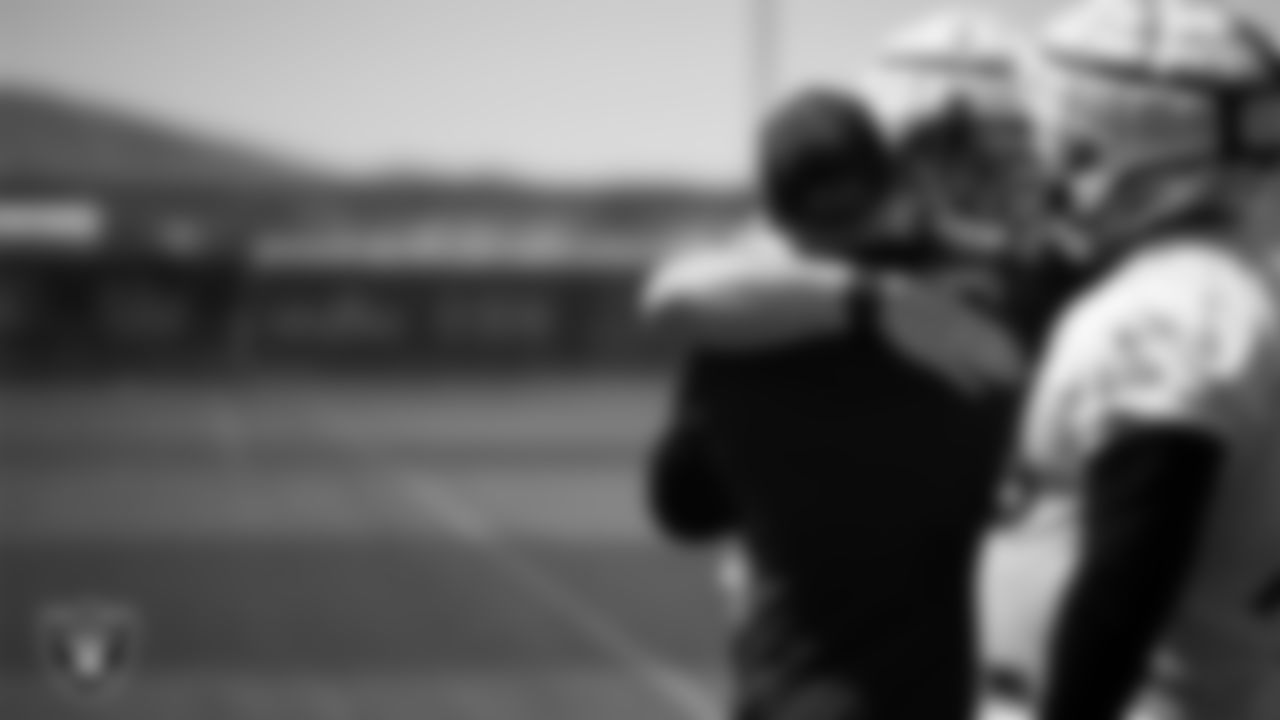
Las Vegas Raiders offensive coordinator Luke Getsy and guard Ben Brown (79) at an Organized Team Activity (OTA) at Intermountain Health Performance Center.

Las Vegas Raiders tight end Harrison Bryant (84) at an Organized Team Activity (OTA) at Intermountain Health Performance Center.

Las Vegas Raiders safety Isaiah Pola-Mao (20) at an Organized Team Activity (OTA) at Intermountain Health Performance Center.

Las Vegas Raiders cornerbacks coach Ricky Manning Jr. at an Organized Team Activity (OTA) at Intermountain Health Performance Center.

Las Vegas Raiders cornerback Nate Hobbs (39) at an Organized Team Activity (OTA) at Intermountain Health Performance Center.
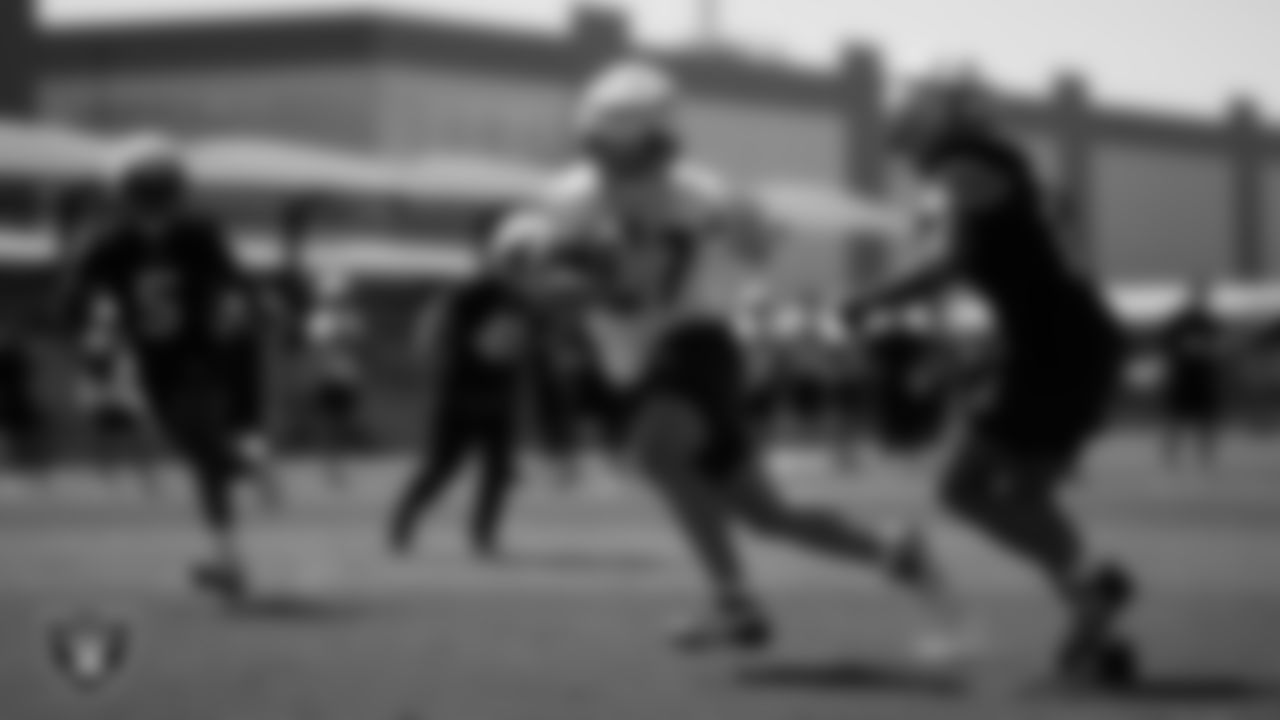
Las Vegas Raiders tight end Michael Mayer (87) at an Organized Team Activity (OTA) at Intermountain Health Performance Center.

Las Vegas Raiders safety Chris Smith II (29) at an Organized Team Activity (OTA) at Intermountain Health Performance Center.

Las Vegas Raiders linebacker Divine Deablo (5) at an Organized Team Activity (OTA) at Intermountain Health Performance Center.

Las Vegas Raiders cornerbacks coach Ricky Manning Jr. at an Organized Team Activity (OTA) at Intermountain Health Performance Center.

Las Vegas Raiders safety Marcus Epps (1) at an Organized Team Activity (OTA) at Intermountain Health Performance Center.
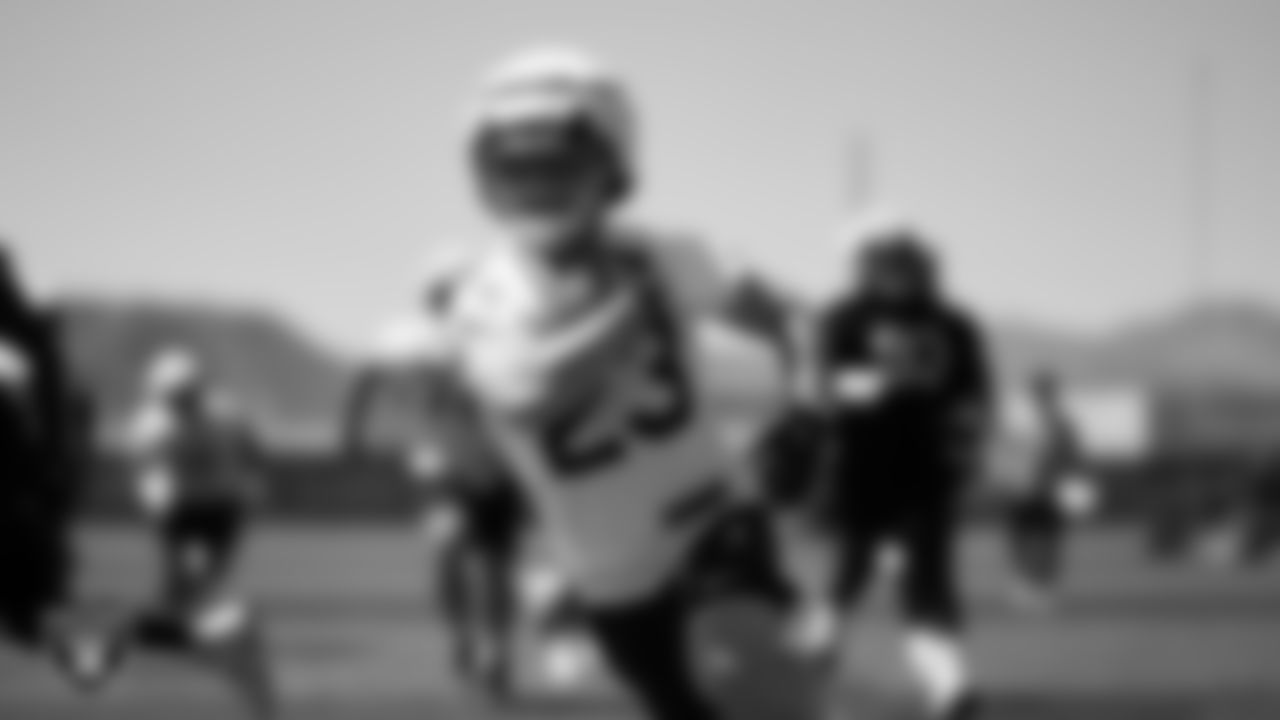
Las Vegas Raiders running back Dylan Laube (23) at an Organized Team Activity (OTA) at Intermountain Health Performance Center.

Las Vegas Raiders defensive tackle John Jenkins (95) at an Organized Team Activity (OTA) at Intermountain Health Performance Center.

Las Vegas Raiders defensive end Charles Snowden (49) and defensive end Elerson Smith (92) at an Organized Team Activity (OTA) at Intermountain Health Performance Center.

The special teams unit and assistant special teams coach Derius Swinton II at an Organized Team Activity (OTA) at Intermountain Health Performance Center.
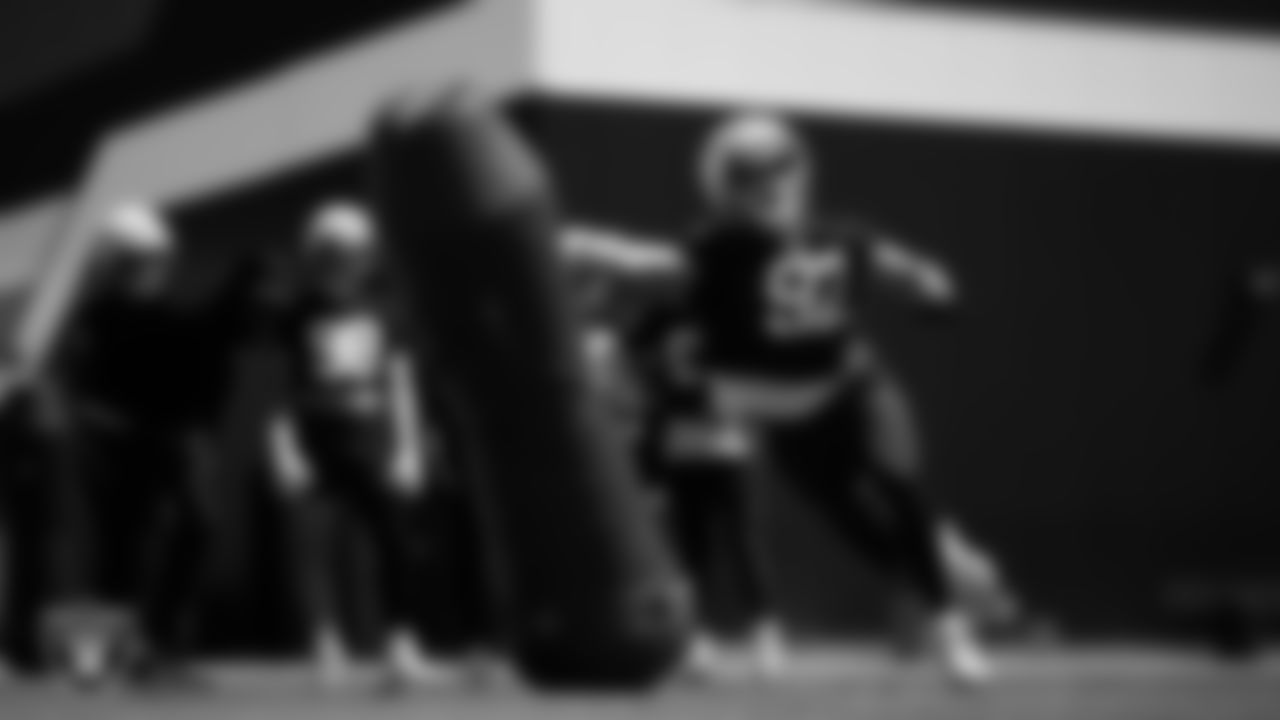
Las Vegas Raiders defensive end Elerson Smith (92) at an Organized Team Activity (OTA) at Intermountain Health Performance Center.
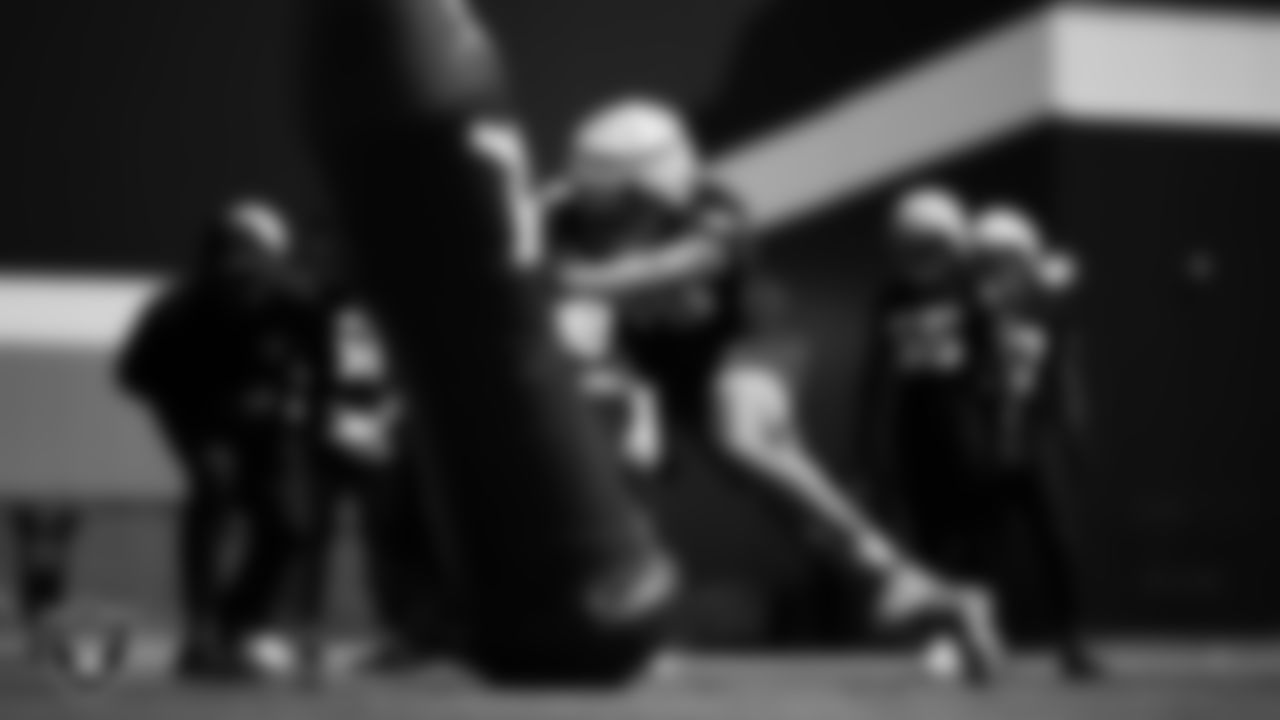
Las Vegas Raiders defensive end Charles Snowden (49) at an Organized Team Activity (OTA) at Intermountain Health Performance Center.
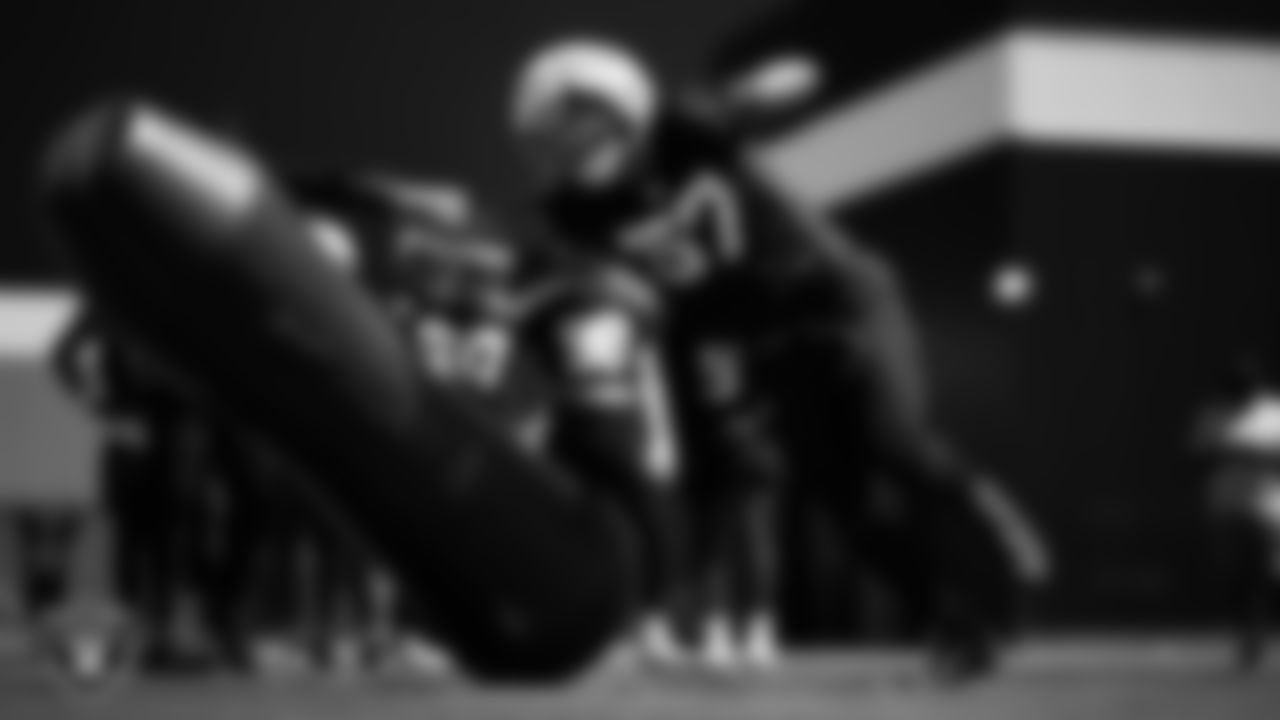
Las Vegas Raiders defensive end TJ Franklin (57) at an Organized Team Activity (OTA) at Intermountain Health Performance Center.

Las Vegas Raiders defensive end Tyree Wilson (9) at an Organized Team Activity (OTA) at Intermountain Health Performance Center.

Las Vegas Raiders defensive end Janarius Robinson (97) at an Organized Team Activity (OTA) at Intermountain Health Performance Center.

Las Vegas Raiders defensive end Elerson Smith (92) at an Organized Team Activity (OTA) at Intermountain Health Performance Center.

Las Vegas Raiders defensive lineman David Agoha (55) at an Organized Team Activity (OTA) at Intermountain Health Performance Center.

Las Vegas Raiders defensive end Tyree Wilson (9) at an Organized Team Activity (OTA) at Intermountain Health Performance Center.

Las Vegas Raiders defensive end Janarius Robinson (97) at an Organized Team Activity (OTA) at Intermountain Health Performance Center.
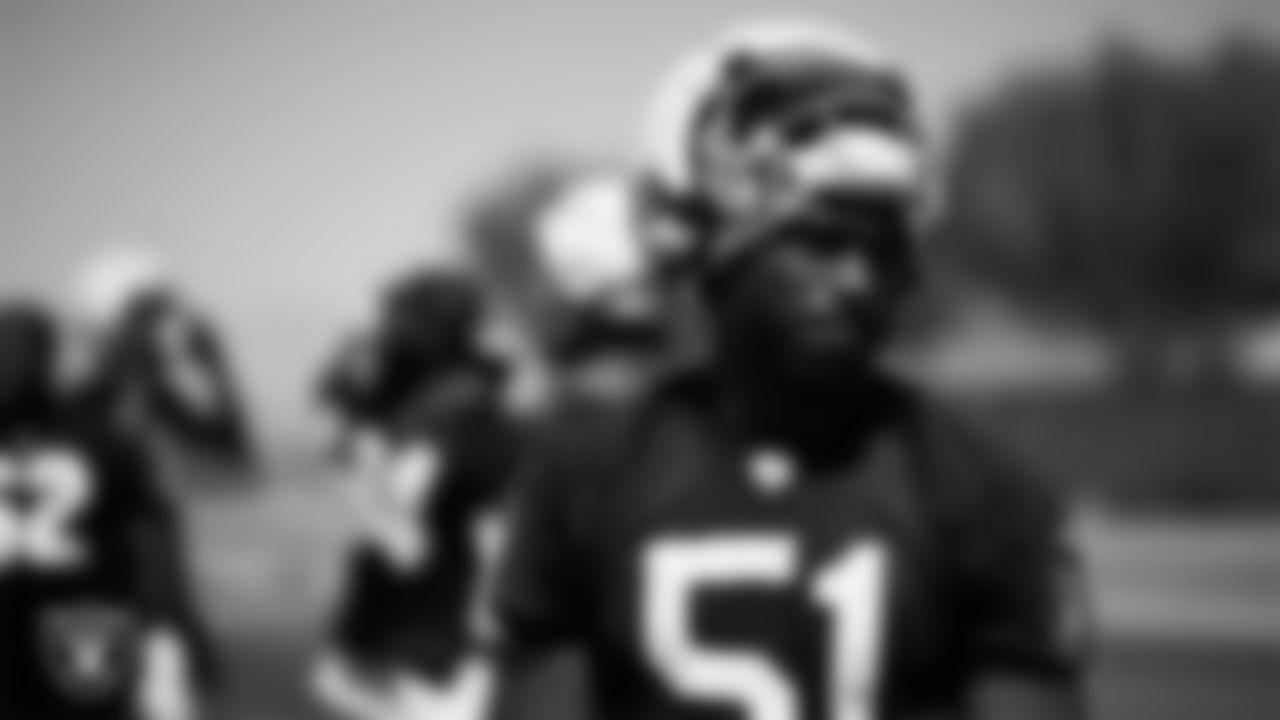
Las Vegas Raiders defensive end Malcolm Koonce (51) at an Organized Team Activity (OTA) at Intermountain Health Performance Center.

Las Vegas Raiders defensive end Charles Snowden (49) at an Organized Team Activity (OTA) at Intermountain Health Performance Center.

Las Vegas Raiders defensive end Maxx Crosby (98) at an Organized Team Activity (OTA) at Intermountain Health Performance Center.
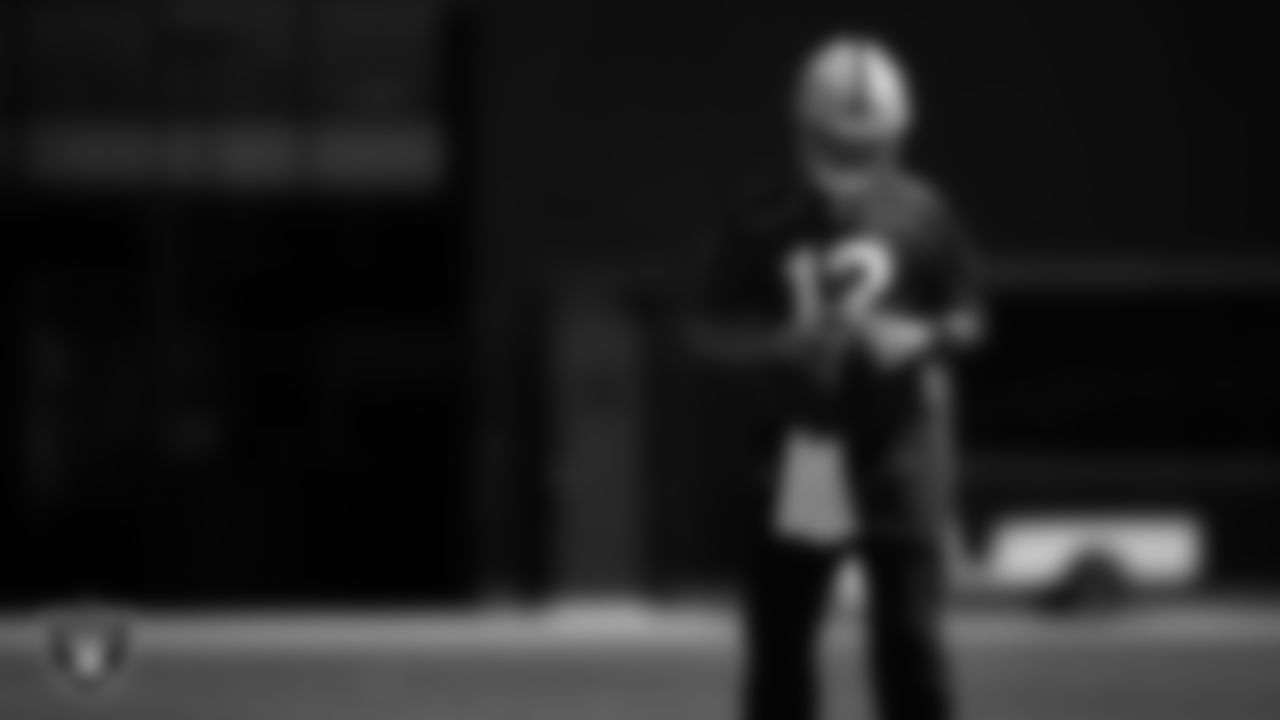
Las Vegas Raiders quarterback Aidan O'Connell (12) at an Organized Team Activity (OTA) at Intermountain Health Performance Center.
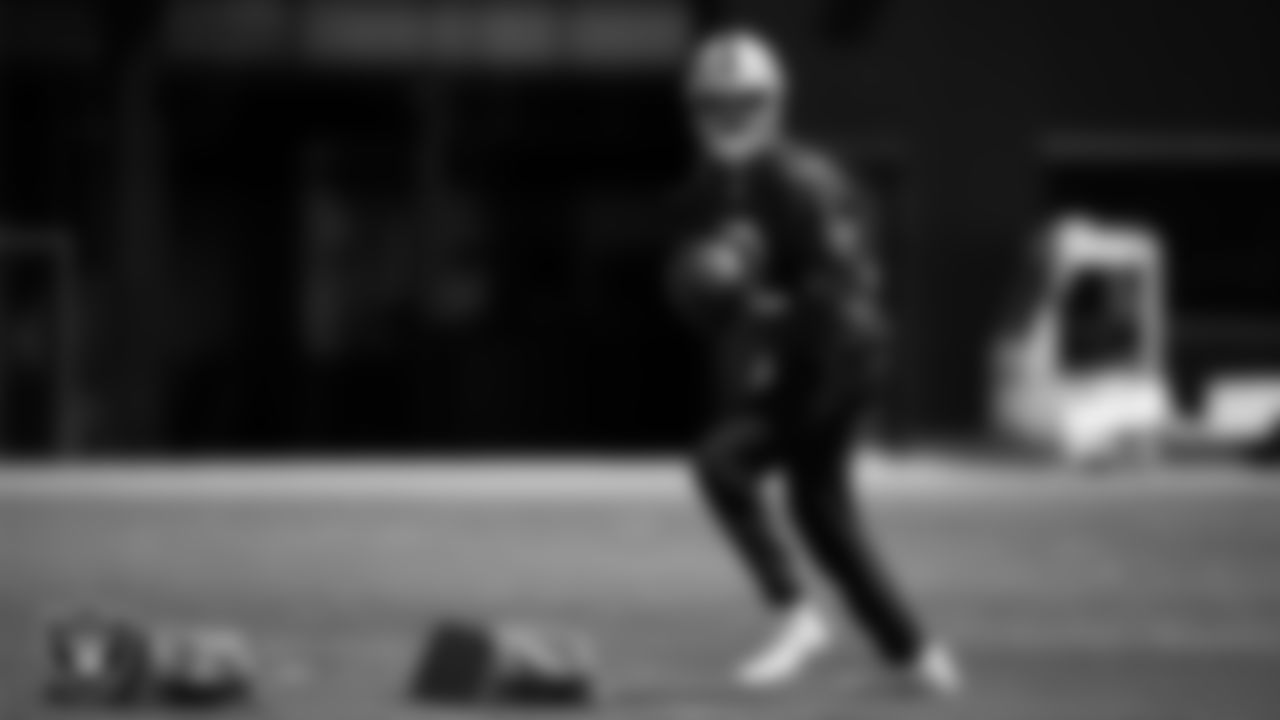
Las Vegas Raiders quarterback Aidan O'Connell (12) at an Organized Team Activity (OTA) at Intermountain Health Performance Center.

Las Vegas Raiders quarterback Carter Bradley (14) at an Organized Team Activity (OTA) at Intermountain Health Performance Center.
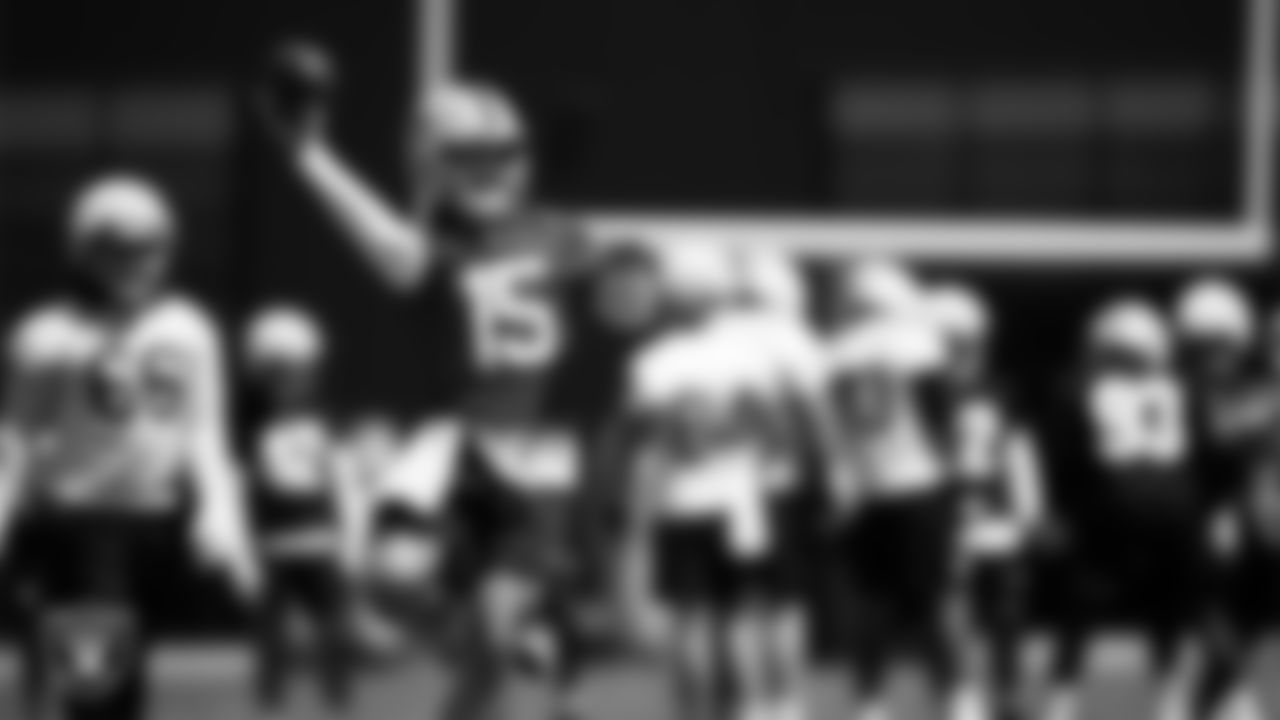
Las Vegas Raiders quarterback Gardner Minshew II (15) at an Organized Team Activity (OTA) at Intermountain Health Performance Center.
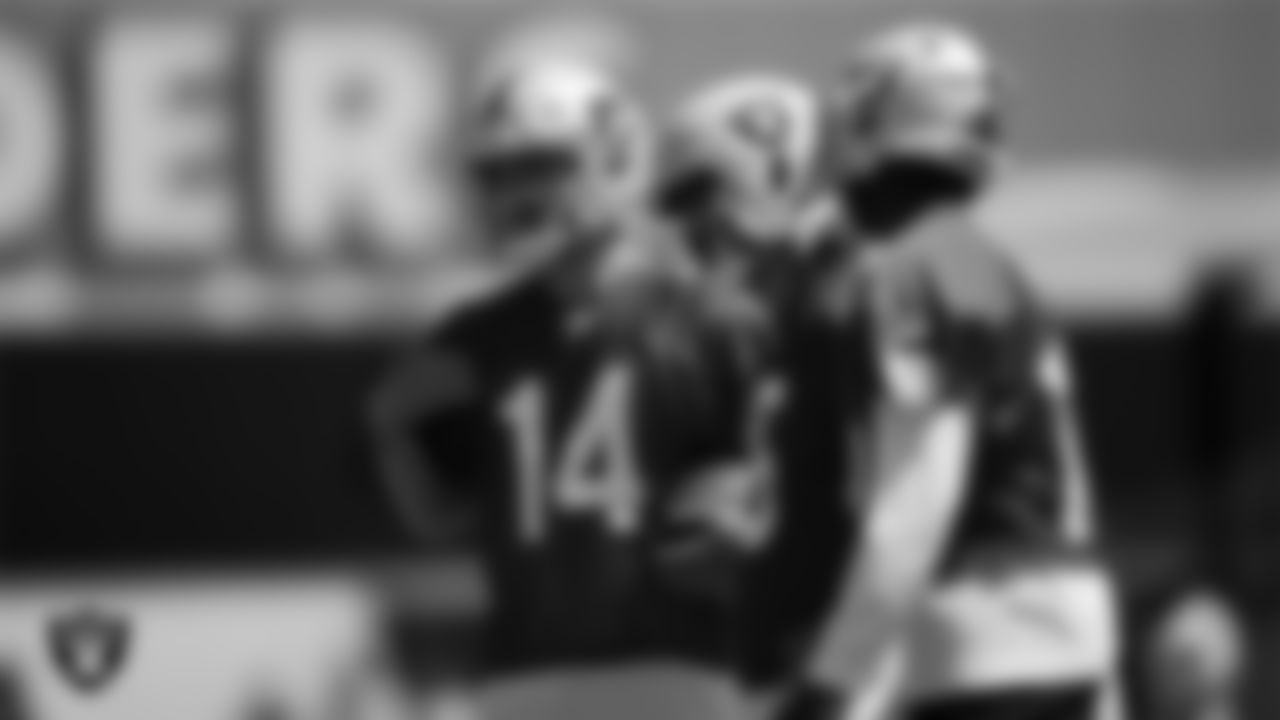
Las Vegas Raiders quarterback Carter Bradley (14) at an Organized Team Activity (OTA) at Intermountain Health Performance Center.

Las Vegas Raiders quarterback Aidan O'Connell (12) at an Organized Team Activity (OTA) at Intermountain Health Performance Center.
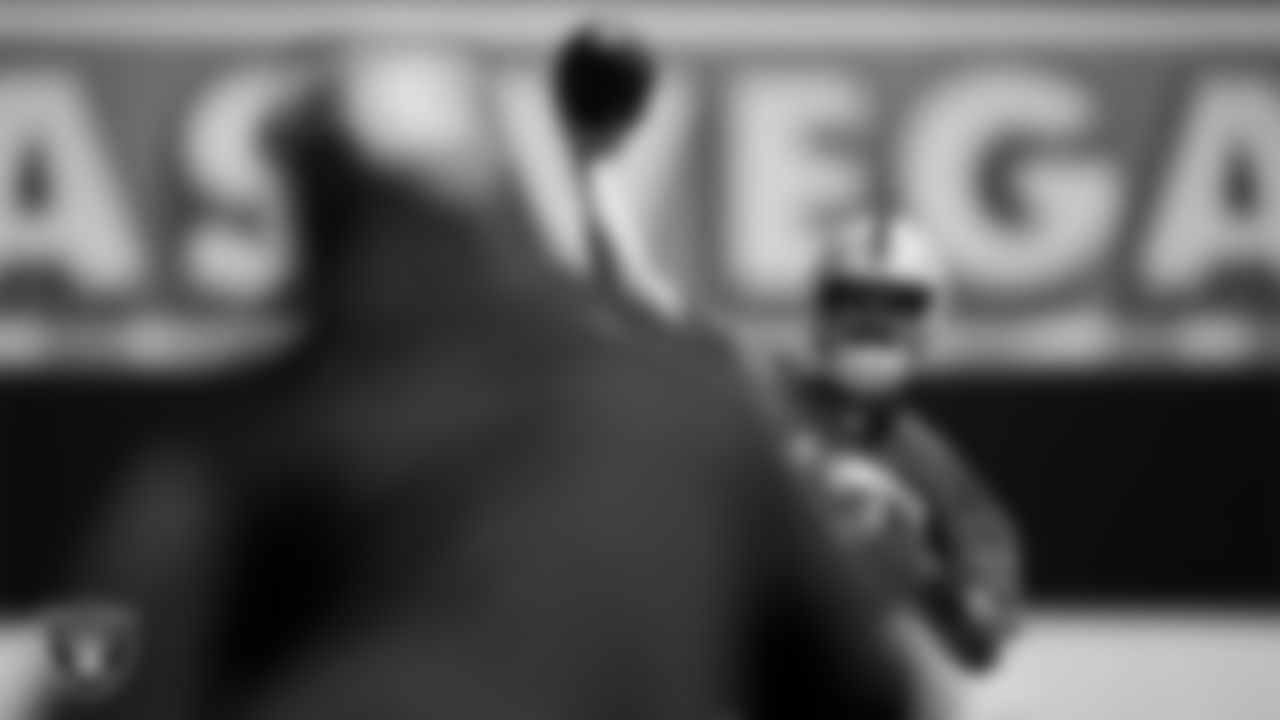
Las Vegas Raiders quarterback Aidan O'Connell (12) at an Organized Team Activity (OTA) at Intermountain Health Performance Center.

Las Vegas Raiders quarterback Gardner Minshew II (15) at an Organized Team Activity (OTA) at Intermountain Health Performance Center.

Las Vegas Raiders quarterback Gardner Minshew II (15) at an Organized Team Activity (OTA) at Intermountain Health Performance Center.

Las Vegas Raiders quarterback Anthony Brown Jr. (13) at an Organized Team Activity (OTA) at Intermountain Health Performance Center.

Las Vegas Raiders quarterback Carter Bradley (14) at an Organized Team Activity (OTA) at Intermountain Health Performance Center.

Las Vegas Raiders guard Ben Brown (79) at an Organized Team Activity (OTA) at Intermountain Health Performance Center.

Las Vegas Raiders tackle Dalton Wagner (78) at an Organized Team Activity (OTA) at Intermountain Health Performance Center.
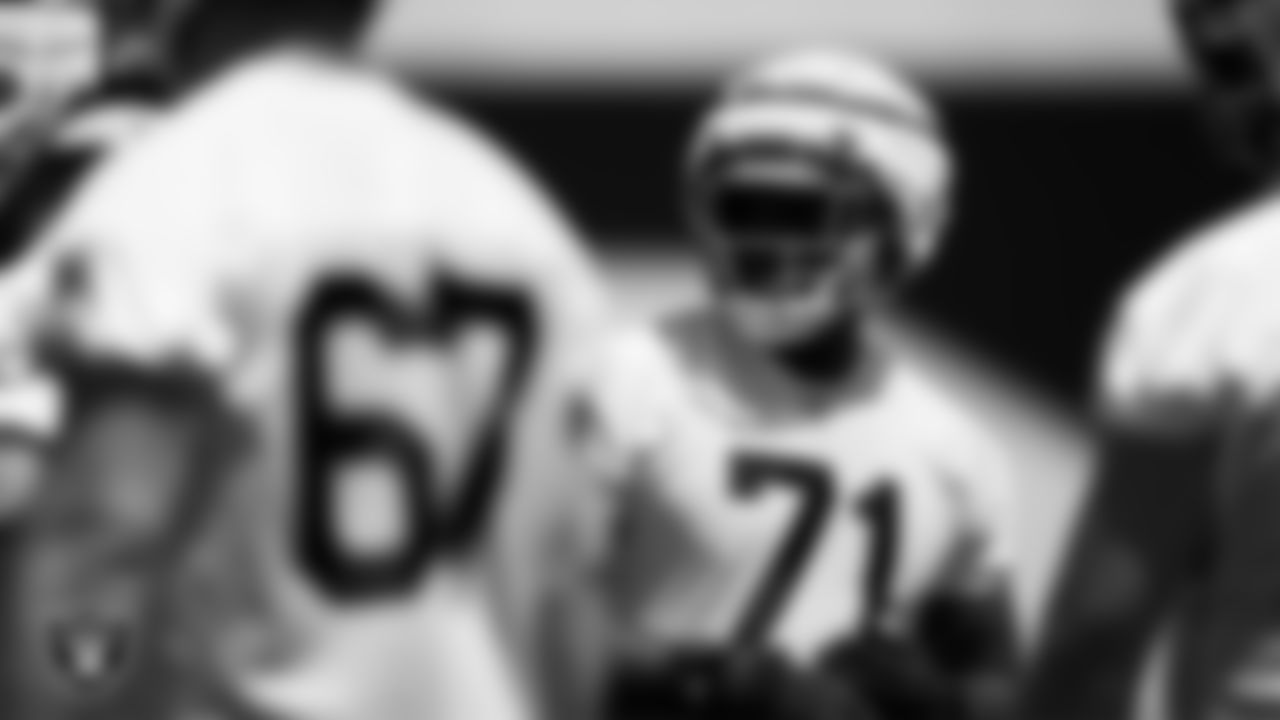
Las Vegas Raiders tackle DJ Glaze (71) at an Organized Team Activity (OTA) at Intermountain Health Performance Center.
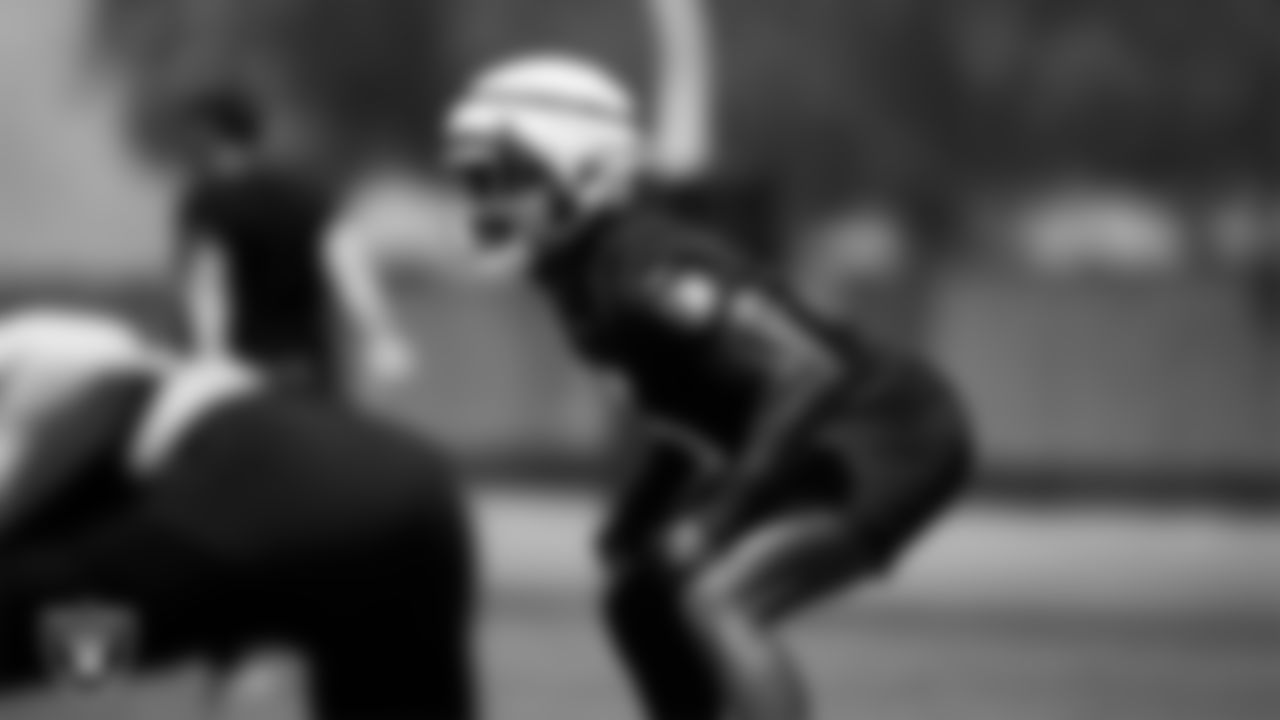
Las Vegas Raiders linebacker Divine Deablo (5) at an Organized Team Activity (OTA) at Intermountain Health Performance Center.
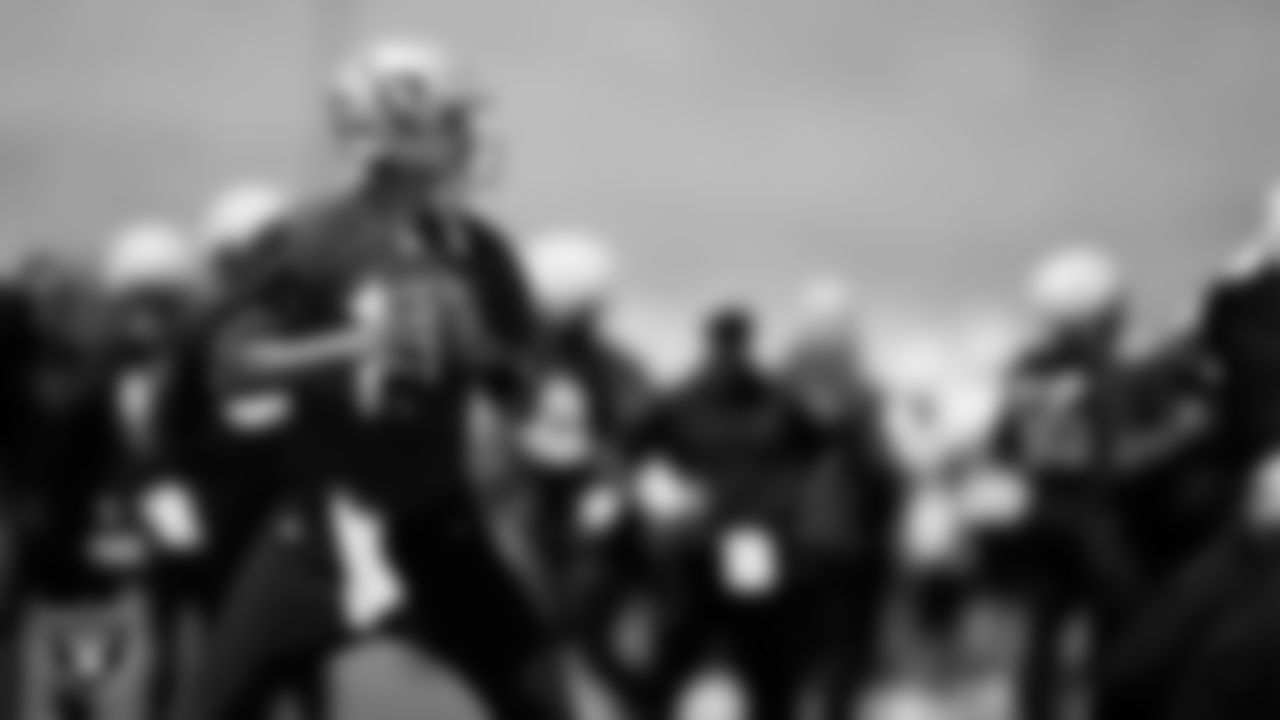
Las Vegas Raiders quarterback Aidan O'Connell (12) at an Organized Team Activity (OTA) at Intermountain Health Performance Center.
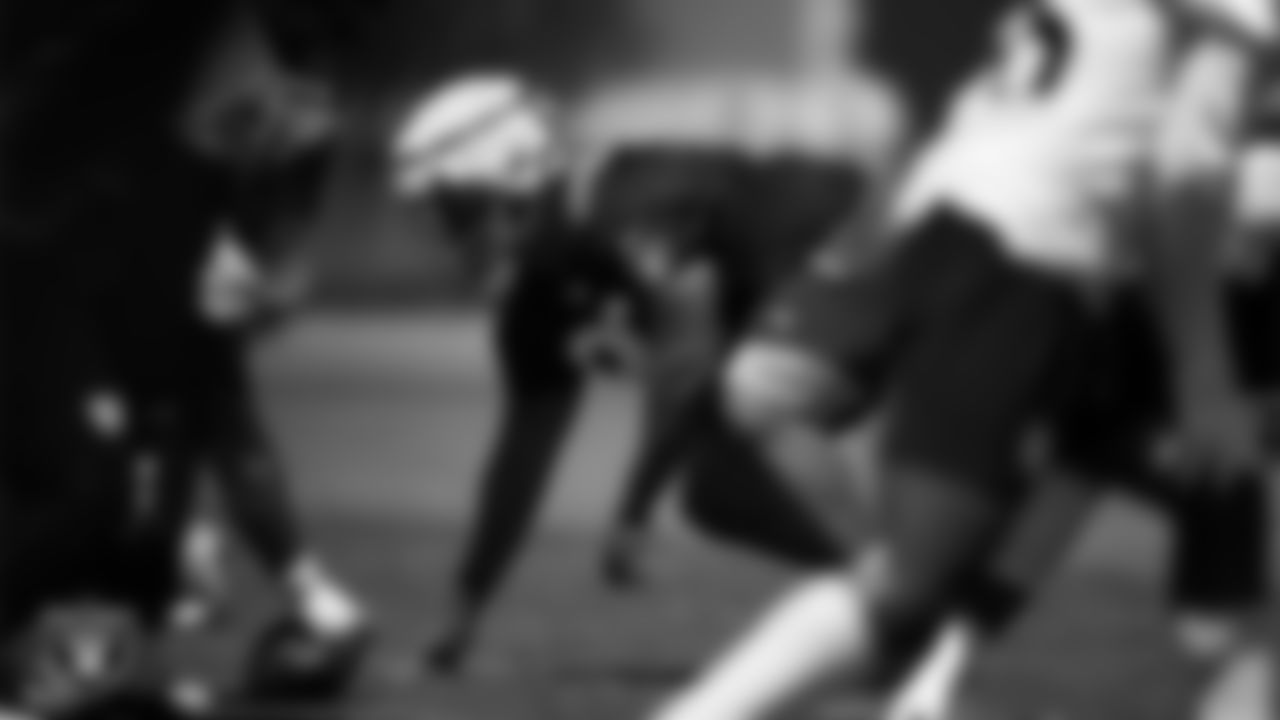
Las Vegas Raiders defensive tackle John Jenkins (95) at an Organized Team Activity (OTA) at Intermountain Health Performance Center.
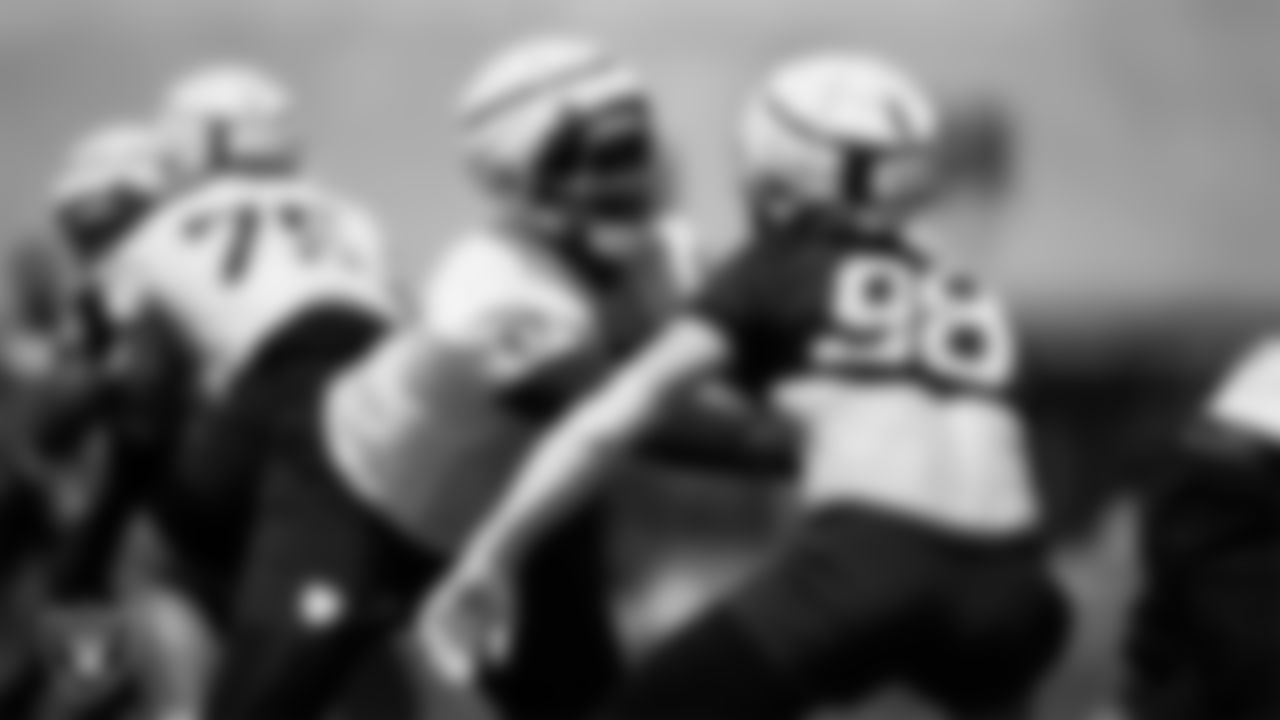
Las Vegas Raiders tackle Thayer Munford Jr. (77) and defensive end Maxx Crosby (98) at an Organized Team Activity (OTA) at Intermountain Health Performance Center.
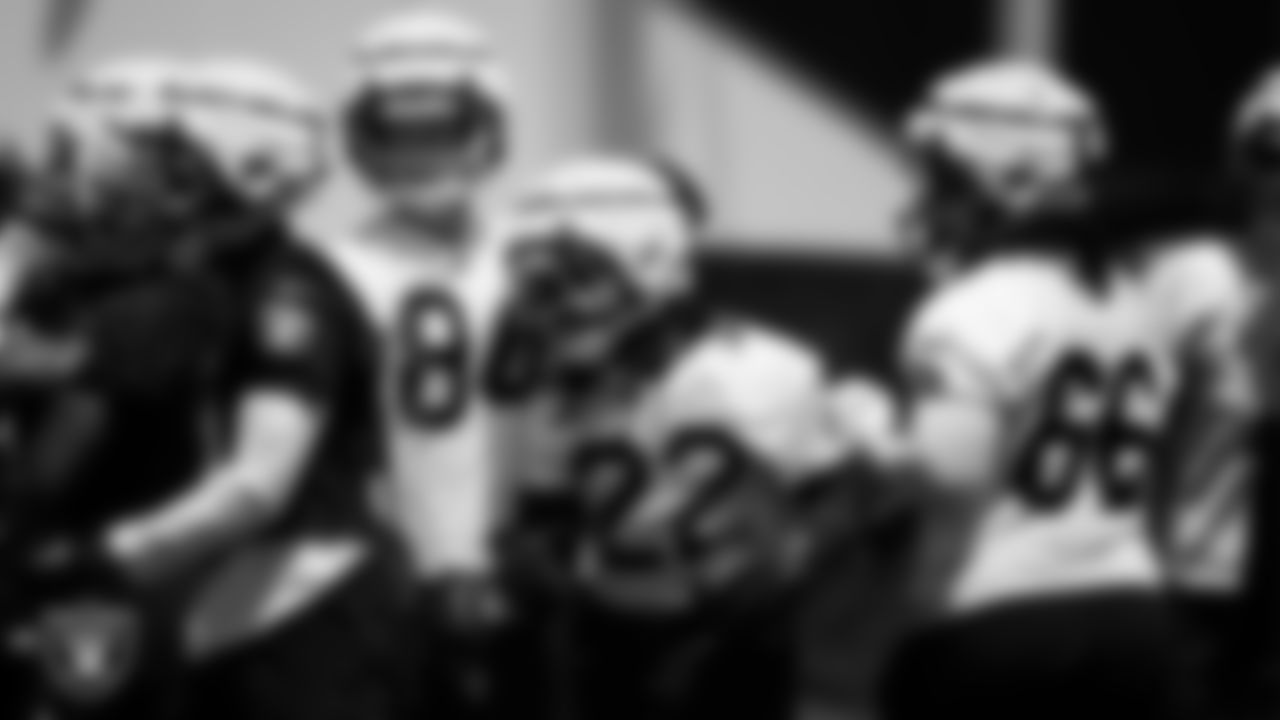
Las Vegas Raiders tight end Harrison Bryant (84), running back Alexander Mattison (22) and guard Dylan Parham (66) at an Organized Team Activity (OTA) at Intermountain Health Performance Center.
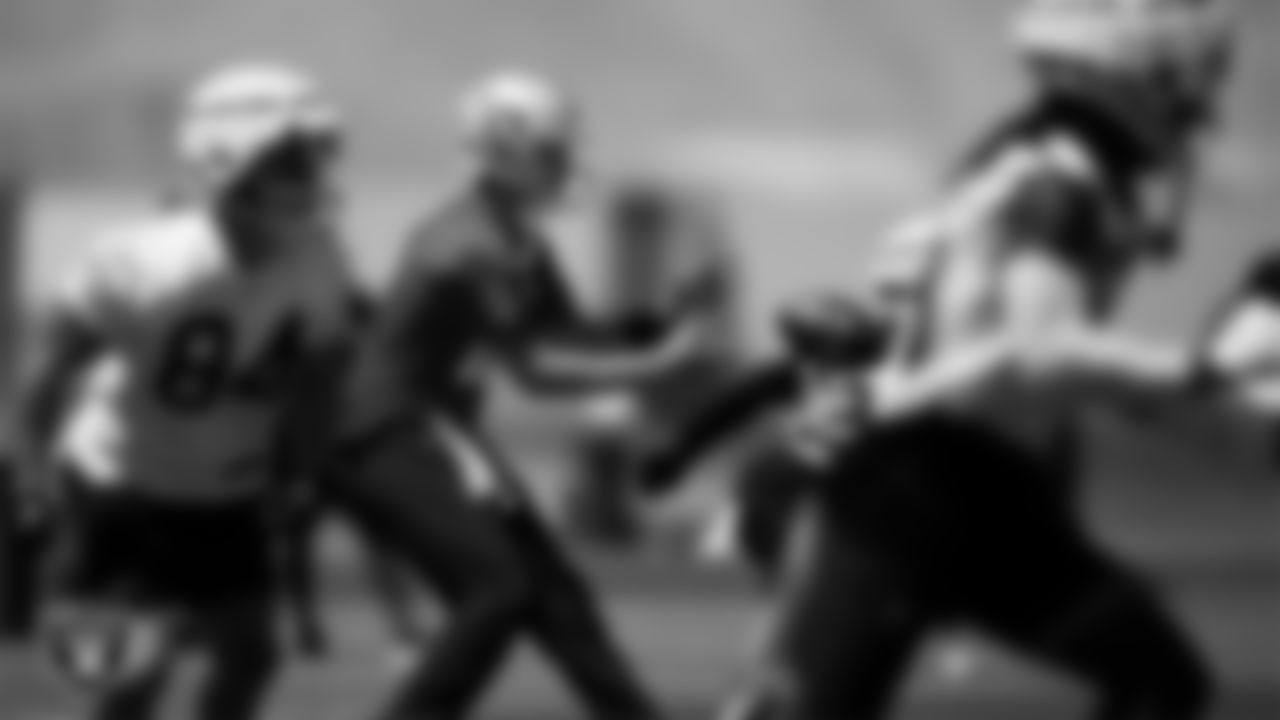
Las Vegas Raiders quarterback Aidan O'Connell (12) at an Organized Team Activity (OTA) at Intermountain Health Performance Center.
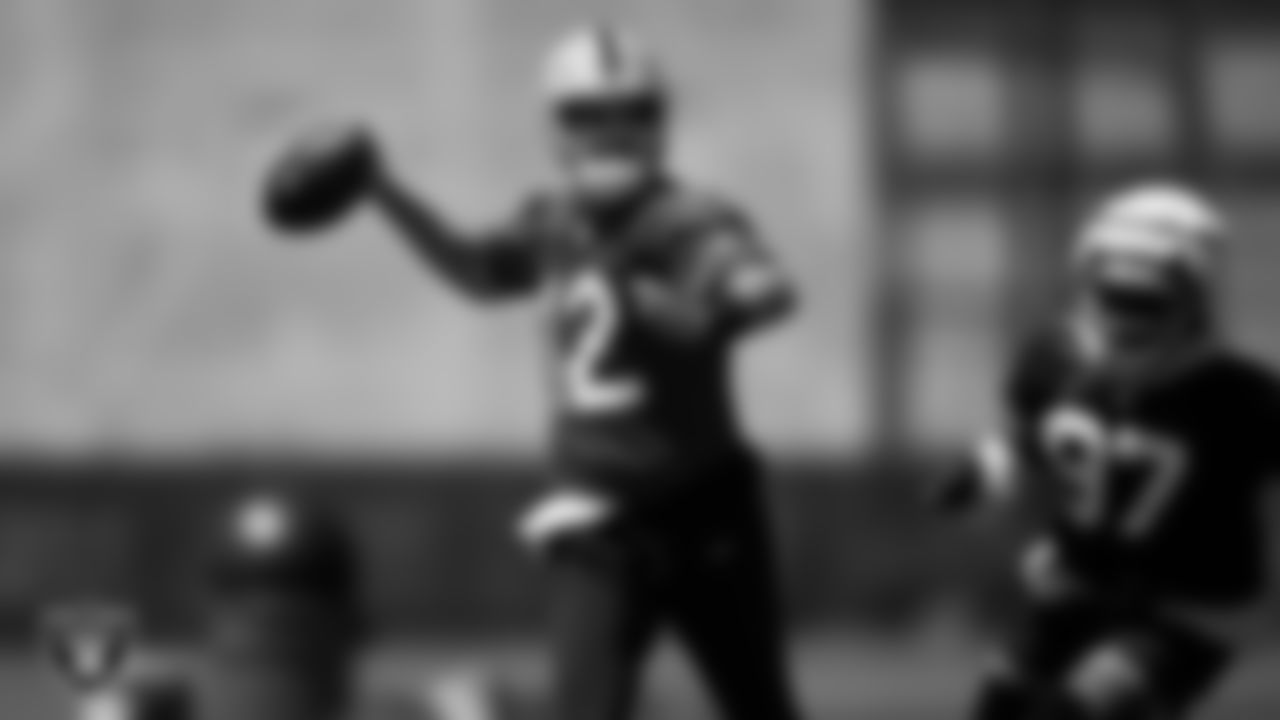
Las Vegas Raiders quarterback Aidan O'Connell (12) at an Organized Team Activity (OTA) at Intermountain Health Performance Center.

Las Vegas Raiders wide receiver Kristian Wilkerson (83) at an Organized Team Activity (OTA) at Intermountain Health Performance Center.
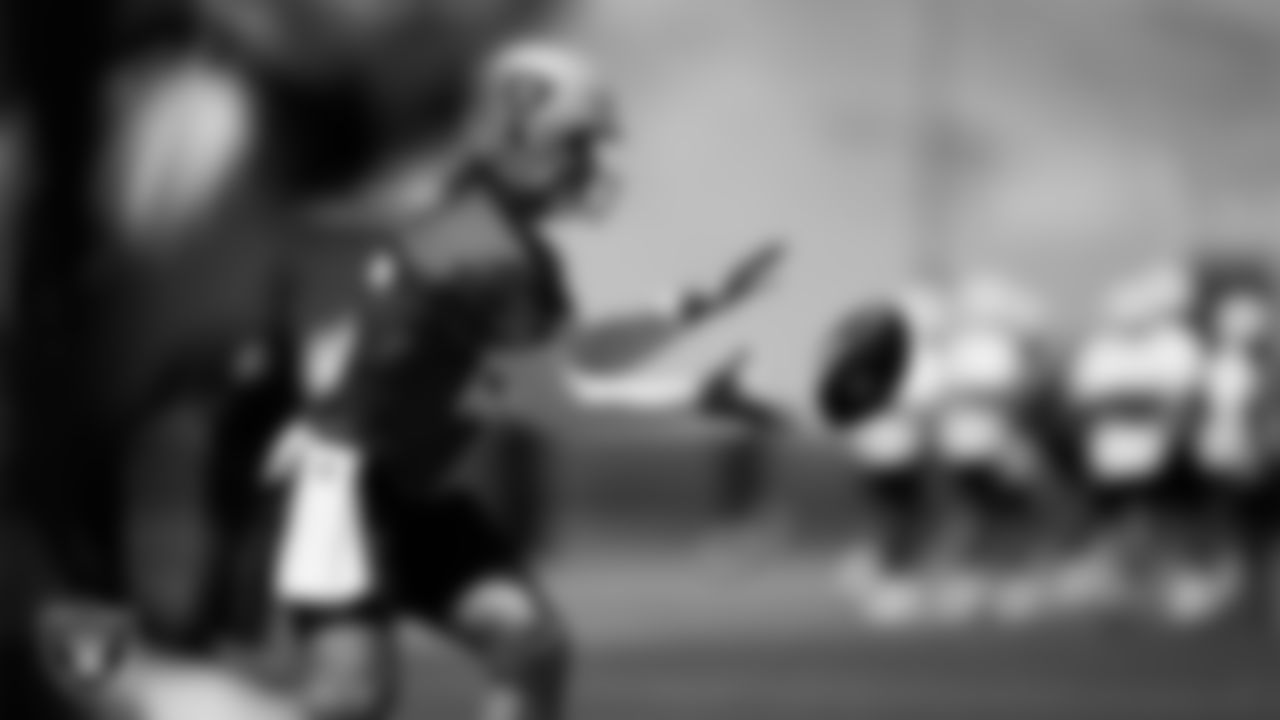
Las Vegas Raiders quarterback Gardner Minshew II (15) at an Organized Team Activity (OTA) at Intermountain Health Performance Center.
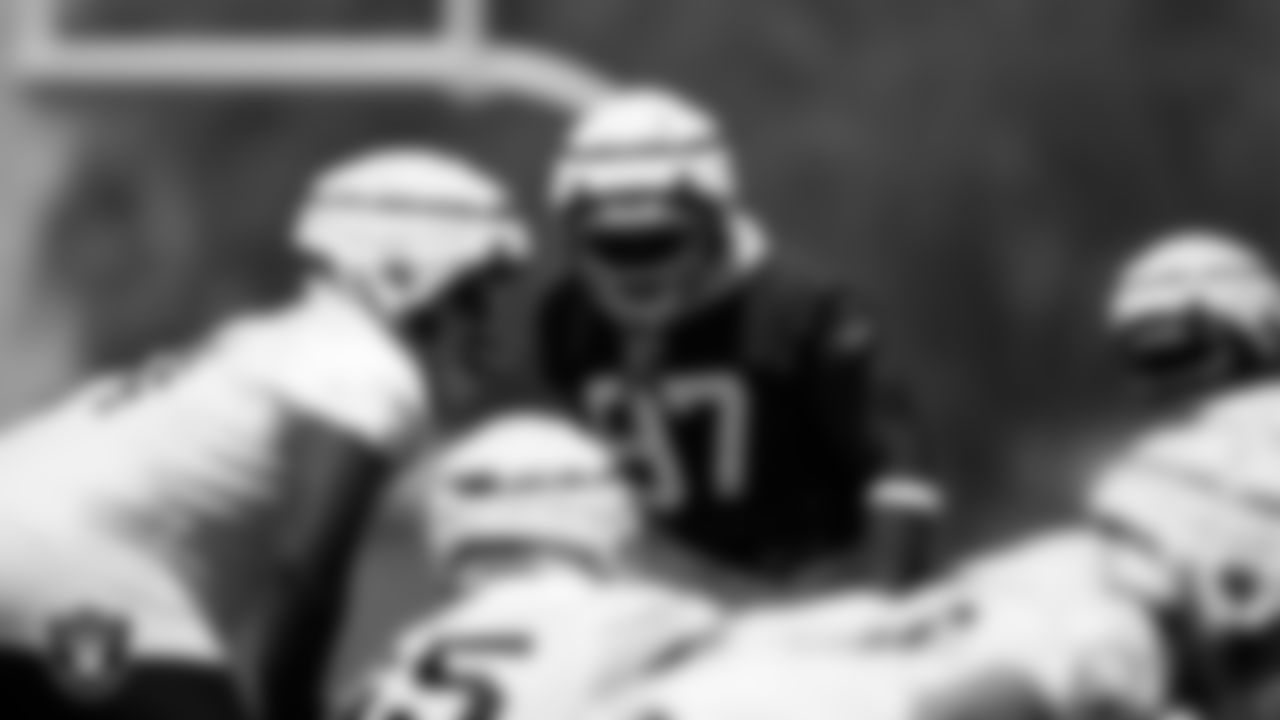
Las Vegas Raiders defensive end Janarius Robinson (97) at an Organized Team Activity (OTA) at Intermountain Health Performance Center.
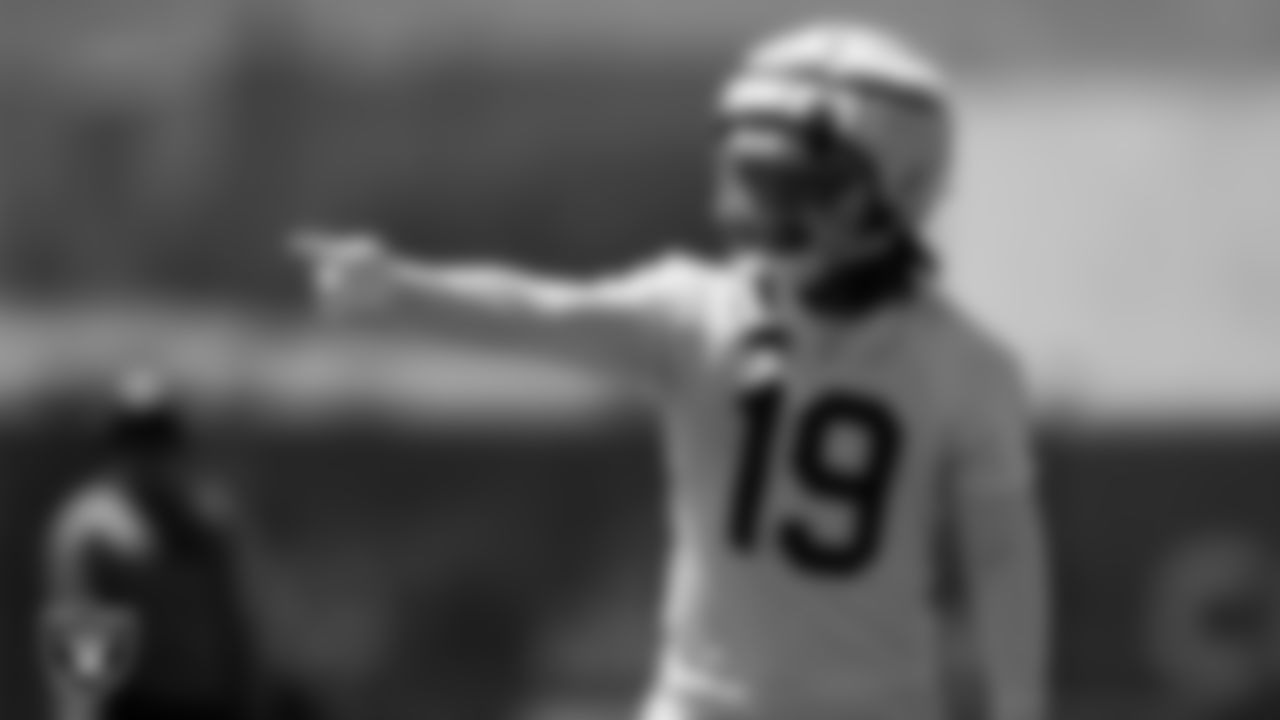
Las Vegas Raiders wide receiver DJ Turner (19) at an Organized Team Activity (OTA) at Intermountain Health Performance Center.
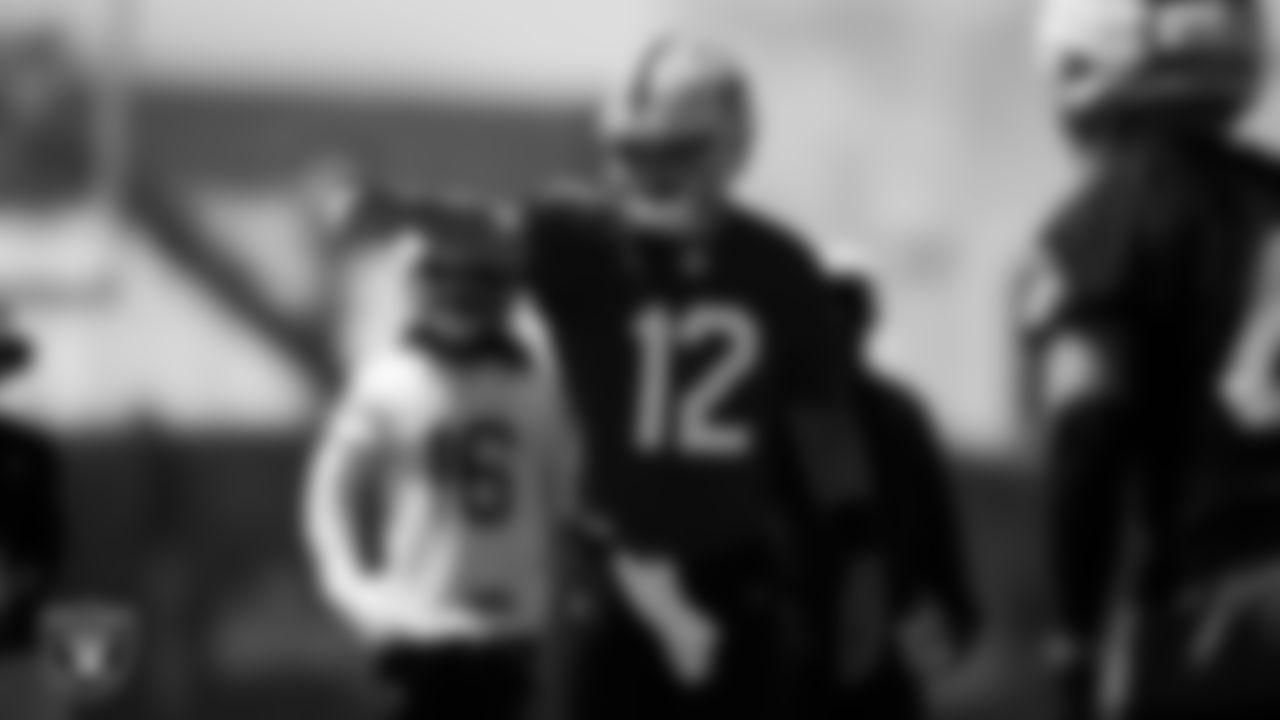
Las Vegas Raiders quarterback Aidan O'Connell (12) at an Organized Team Activity (OTA) at Intermountain Health Performance Center.
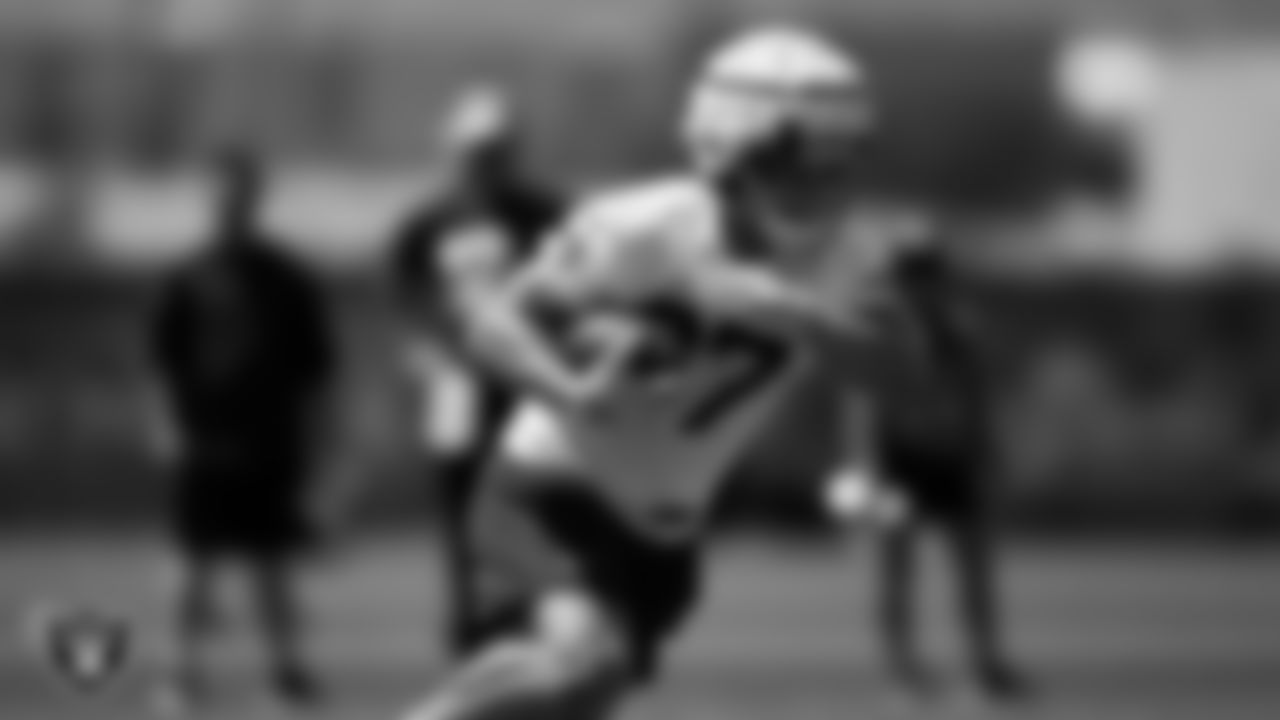
Las Vegas Raiders tight end Michael Mayer (87) at an Organized Team Activity (OTA) at Intermountain Health Performance Center.
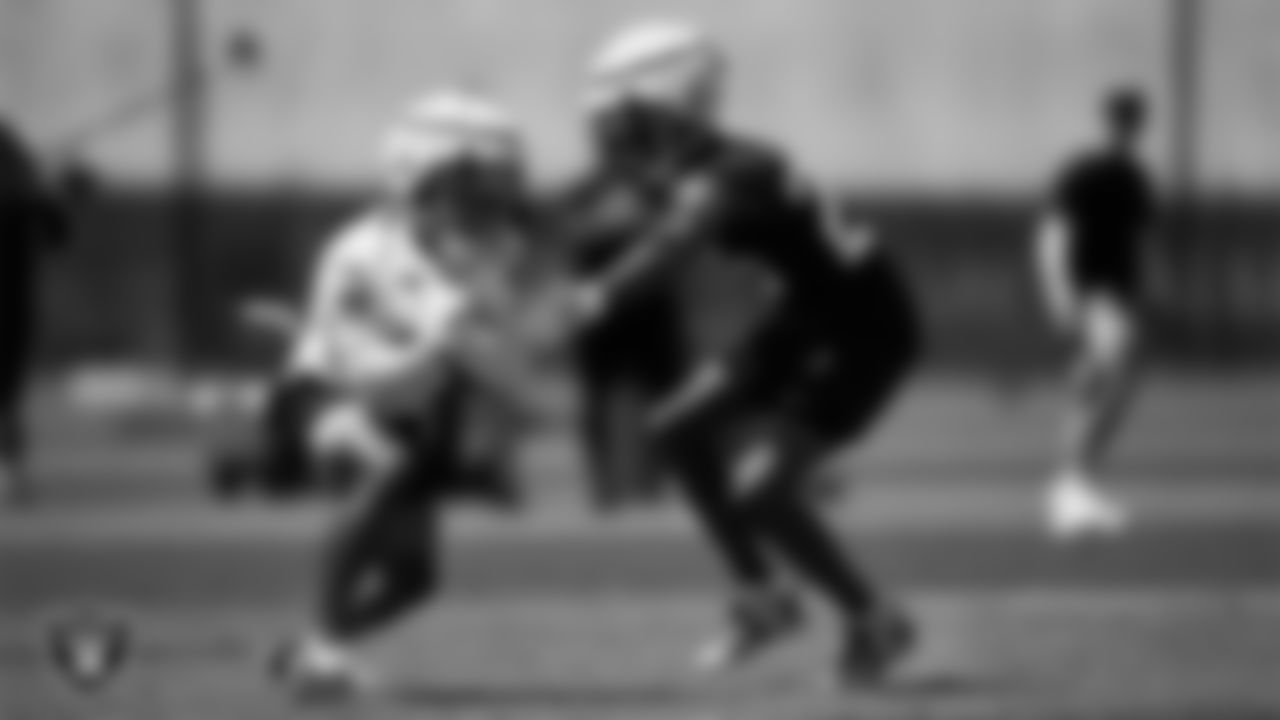
Las Vegas Raiders wide receiver Tre Tucker (11) and cornerback Decamerion Richardson (25) at an Organized Team Activity (OTA) at Intermountain Health Performance Center.

Las Vegas Raiders quarterback Aidan O'Connell (12) at an Organized Team Activity (OTA) at Intermountain Health Performance Center.
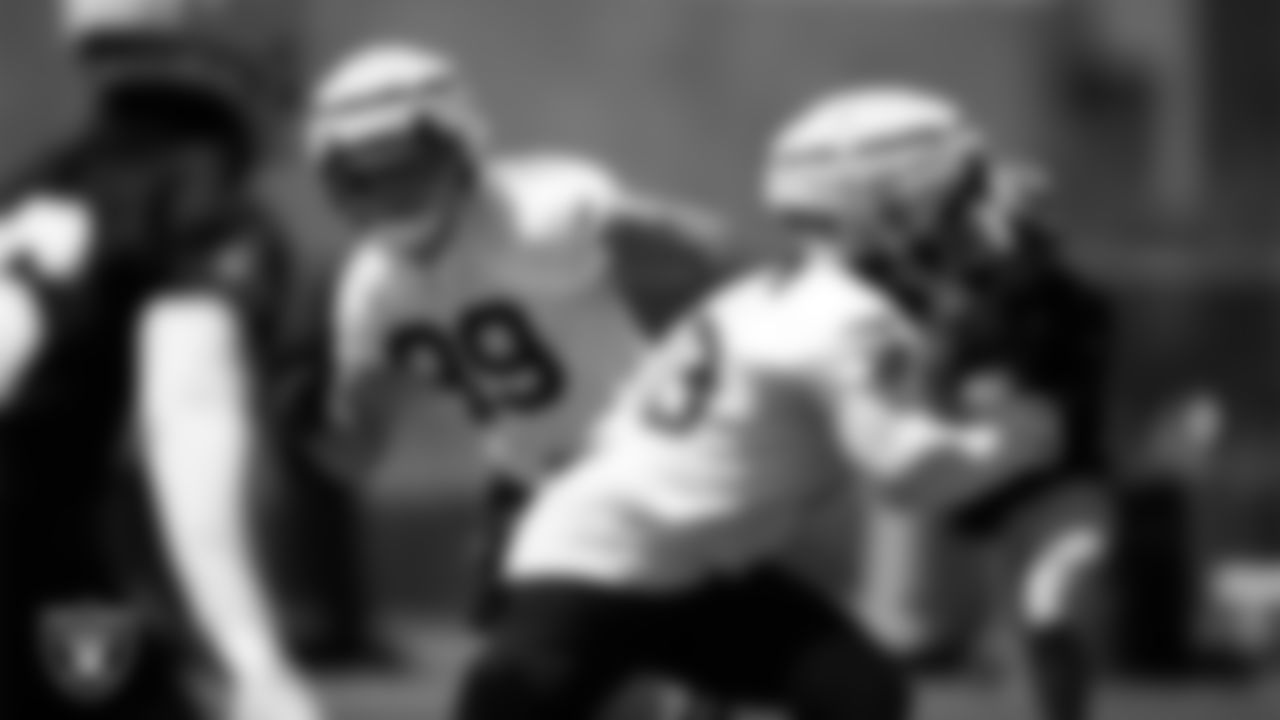
Las Vegas Raiders tight end Brock Bowers (89) at an Organized Team Activity (OTA) at Intermountain Health Performance Center.
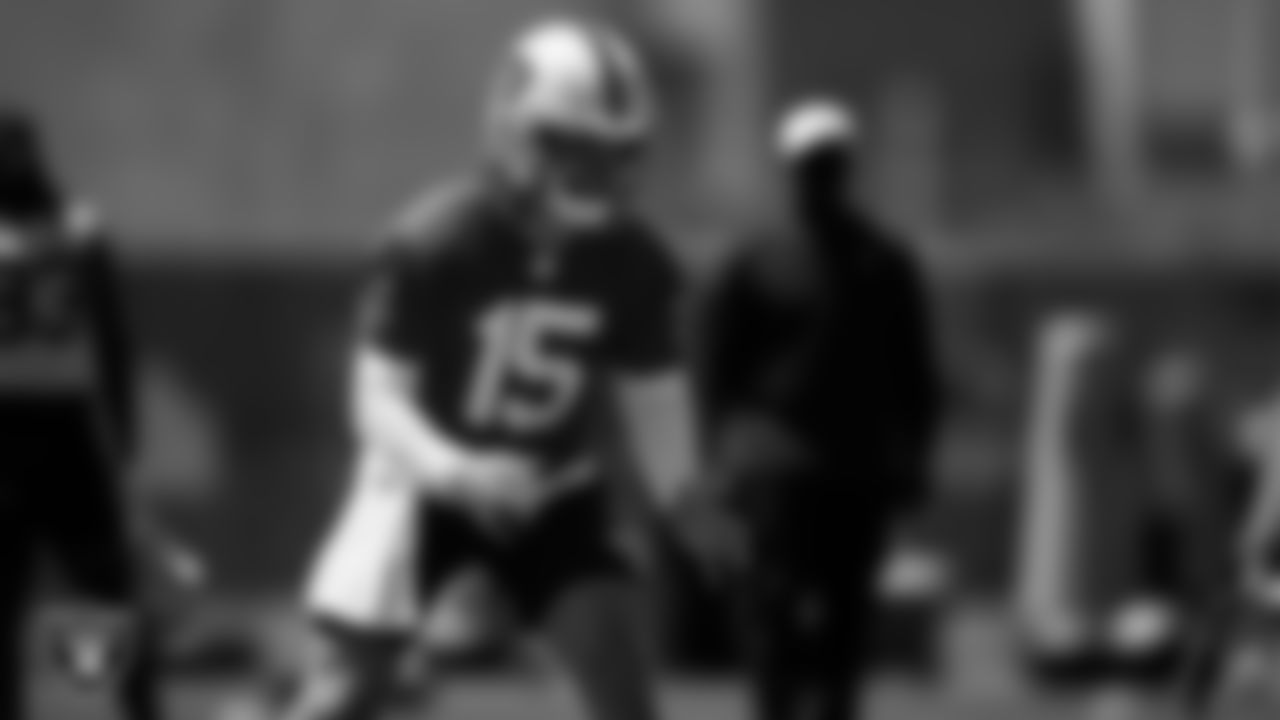
Las Vegas Raiders quarterback Gardner Minshew II (15) at an Organized Team Activity (OTA) at Intermountain Health Performance Center.

Las Vegas Raiders quarterback Gardner Minshew II (15) at an Organized Team Activity (OTA) at Intermountain Health Performance Center.






